

1958- |
1955-2014 |
1958-2010 |
1959-2010 |
1959-2010 |
1963-1973 |
1985-2010 |
|
Cubism is widely accepted as one of the most influential visual art forms of the early twentieth century. It was created by Pablo Picasso (Spanish, 1881–1973) and Georges Braque (French, 1882–1963) in Paris between 1907 and 1914.
the Cubists departed from traditional art to represent a form in its purest way. This was done by showing many different aspects at once. Forms were showed using basic geometric shapes such as the quadrilateral, cone, clyander and sphere.
Works consist of painting and sculpture. The French art critic Louis Vauxcelles coined the term Cubism. Other influences on Cubism are Primitivism, and other non-Western images. The movement was conceived as "a new way of representing the world", and assimilated outside influences, as well as new theories on the nature of reality, such as Einstein's Theory of Relativity.
The initial phase attempted to show objects as the mind, not the eye, perceives them. There were three basic types of cubism; primitive cubism, analytical cubism and synthetic cubism. Primitive cubism began in 1907 and went until 1908. Paul Cezanne's doctrine of cubism during this time defined what cubism was made of. "Every thing in nature takes it's form from the sphere, cone or clyander." The Cubist emphasized a flat, two-dimensional surface and rejected the idea that art should imitate nature, refusing traditional techniques such as perspective, foreshortening, modeling, and chiaroscuro. Cubism was the forerunner of abstract art. Analytic and Synthetic Cubism In the analytic phase (1907—12) the cubist palette was severely limited, largely to black, browns, grays, and off-whites. In addition, forms were rigidly geometric and compositions subtle and intricate. During the later, synthetic phase of cubism (1913 through the 1920s), paintings were composed of fewer and simpler forms in brighter colours. Many artists continued to use collage in their compositions. Aditional cubist artists included the Montmartre-based Bâteau-Lavoir group of artists and poets (Max Jacob, Guillaume Apollinaire, Gertrude and Leo Stein, Modigliani, Picabia, Delaunay, Archipenko, and others); the Puteaux group of the Section d'Or salon (J. Villon, Léger, Picabia, Kupka, Marcoussis, Gleizes, Apollinaire, and others); the Orphists (Delaunay, Duchamp, Picabia, and Villon); and the experimenters in collage who influenced cubist sculpture (Laurens and Lipchitz). Also: Juan Gris, Paul Cezanne, Fernand Leger, Albert Gleizes, Roger de la Fresnage, and cubist scultors Pablo Picasso, Raymond Duchamp-Villon, and Russian-Americans Jacques Lipchitz and Alexsandr Archipenko. The distortions of Picasso's ground-breaking Les Demoiselles d'Avignon, came from African art. |
||
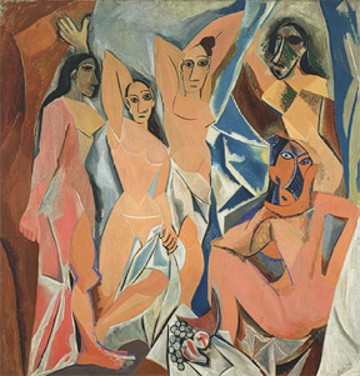
|
 Les Demoiselles d'Avignon, 1907
Les Demoiselles d'Avignon, 1907Pablo Picasso - Artist Oil on canvas, 96 x 92 in. This painting has been called, the first Cubist painting. Picasso made many studies for this work. The title, is a reference to a cabaret on the Carrer d'AvinyĂł in Barcelona. This work is noted for its crude expression. The five women added to speculation on the psychology of Picasso. For artists it was a bold break from a polite esthetic. The picture stayed with Picasso until 1920. | |

|
The Women Of Westport, 1977 After: Les Demoiselles d'Avignon, Picasso Glen River - Artist Oil on canvas, 96 x 92 in. This painting was a hand-shake with Picasso. The title, is a reference to 5 women in my life at the time who are represented in the painting. It was ironic that I got criticism from (non art world people) as to the crudity of the painting. there are many lessons I learned from Picasso. One of them was that at the beginning of discovering a new form the initial works are crude. This is due to the rough approximations which are necessary to define the vision. In other cases what looks like crudity may in fact be part of the vision. As in the cubist esthetic. The picture stayed with me until 1992. | |
| There are several histories involved in this journal. There is the history of my art, the history of events in my life, the history of the "art world", the history of artists art, the history of events in the world, and the history of perception and an understanding of nature.
|
||
|
Non-Object 2, 1958 Glen River - Artist Oil on panel, 16 x 20 in. This painting was inspired by debate on the nature of art, and the meaning of non-objective art. I was fully aware of the body of work the cubist had created. they had inspired great arguments on "what is art". They also forced the definition between (abstract) art and non-objective art. Abstract was a derivative of objective representational art, and on-objective art sought to remain "pure" in it's regard to form, color and composition. | ||
| Still Life With Bouzouki, 1958 Glen River - Artist Oil on canvas, 22 x 36 in. The "Still Life" is a classic (study) method adopted by serious artists and students alike. This early work with Bouzouki survived because it was an oil painting rather than one of the many works on paper of that period. This is a good example of my continuing interest in unification of the representational, the abstract, and the non-objective. In my mind the parallel nature, mind, and metaphysics. | ||
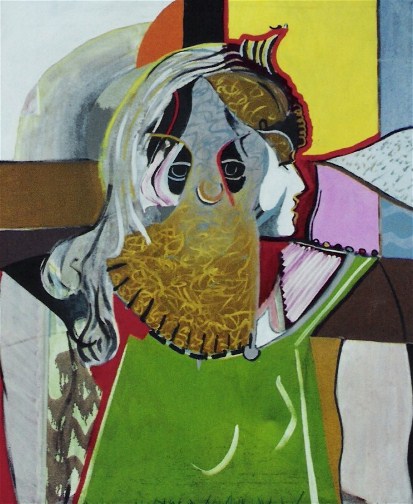
|
Warrior, 1965 Glen River - Artist Oil on panel, 36 x 48 in. This painting is an effort to reconcile the conflicts which came about due to the Viet Nam war, my identity as a warrior, and the evolution of humankind as an intelligent life form. When I came of age to register for the draft, my parents explained the responsibilities of citizens to the "mother country" or "fatherland" depending on the cultural language. This was not a short talk. This was a long series of talks. While the subject in it's greater scope continued, the point of the draft hinged on this statement by my mother speaking for the family. "If you are called to serve your country, I will tell you what the ancient Greek mothers told their sons. 'Come back with your shield, or on it." This meant that I was to do whatever was expected of me as a warrior. Death in the line of duty was coming back on your shield. That was honorable. Coming back with your shield meant you served with honor and did not (drop your shield and run from the fight) that was also honorable. To come back without your shield was to fail as a citizen, as a man, and bring humiliation to the family. | |
| The painting has several (points of view) symbolizing the similtanious manifestations of nature in humanity. At the centre are a pair of dark eyes staring at you. They are the ever present beast as the primative instinctual form. There is also a profile of a white femenine mask. The warrior goddess, a stylization of the crude murder into a civizilized organization for war. The dellima of life where energy is a competative bid to eat, against the intillectualization of perception. And here I am in the dillima of all humanity clothed in the armor of my tribe. This painting is an example of art as a Shamanic process where the artist as a healer attempts to find ballence threw the practice of imaging. | ||
| Institution, 1967 Glen River - Artist Oil on canvas, 6 x 4 feet | ||
| Bank Nude, 1966 Glen River - Artist Oil on canvas, 20 x 32 in. | ||
In Box is a favorite as it is part of a very humorous group of paintings. They were more memorable as Jack Torwkove, who was head of the Yale art school at the time, responded with uproarious lefter. The joke was a reference to many inner conceptual space motifs. Many cubists played with this space which was an intellectual construct. It presented multiple spacial readings simultaneously which would cause distress in anyone attempting to place a literal object in space preconception on it. So the joke was about the preconceptions we are conditioned to bring to our process of seeing. In science a joke about causal relationships and superstructure appearing as chaos might be a similar situation where only someone who had been doing advance study in that field would get the joke. |
In Box, 1969 Glen River - Artist Oil on canvas, 16 x 16 in. | |
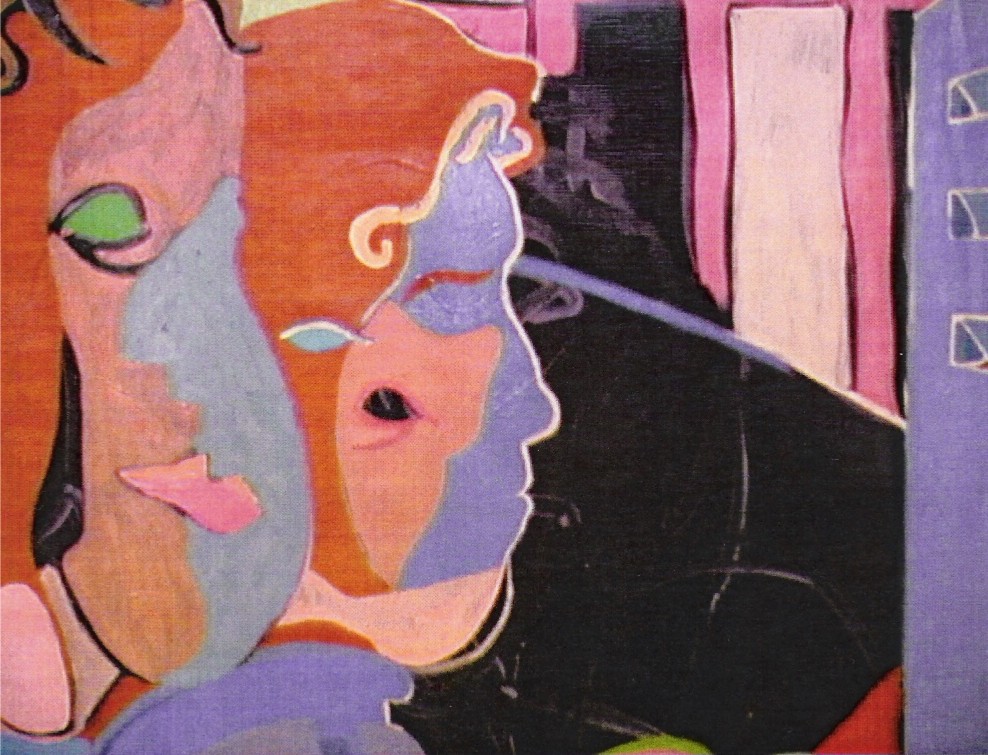
|
Wendy 3, 1969 Glen River - Artist Oil on canvas, 36 x 42 in. | |
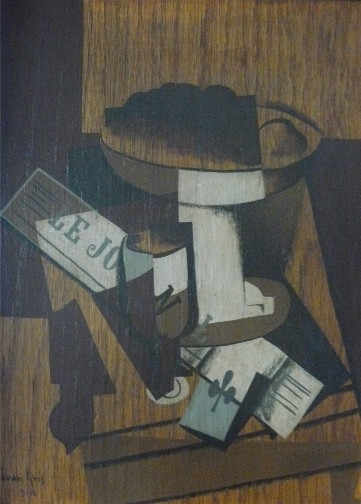
|
 Setting, Juan Gris - Artist Oil on panel, 16 x 20 in. Juan Gris was born José Victoriano González-Pérez, on March 23, 1887, In 1905, he adopted the pseudonym of Juan Gris. Juan spent a year with Picasso and was drawn to the 'Cubist Movement.' He painted monochromatic still-life canvasses. He held his first exhibition in a small gallery, which was well received. This was followed by his first masterpiece, "Homage à Picasso" (1912), which was displayed at the Salon des Indépendants and the Salon d'Or. He was responsible for a new style, "The Gris Grid," Employed in 1912, the "Man in the Café" and "The Watch." Juan latched on to collages. By 1913, Gris devised his own methods of cut and paste, wherein he would use the elements 'Realistically' and not as mere 'Cubist' representations. Juan's were much richer and more colorful, as seen in the "Violin and Engraving" (1913), "The Marble Console" (1914), and "the Flowers" (1914). | |
| Paul Cezanne (January 19, 1839 - October 22, 1906) At the start of his career, his paintings were viewed as expressionist. On being introduced to Camille Pissaro and the Impressionists,(July, 1830) his style became lighter. Many believed Cezanne had discovered a way to depict both light and form. Expanding on Impressionism, categorized him as a Post-Impressionist and pointed the way to Cubism.
Cezanne was known for: studying the same subjects over and over again, exploration of binocular vision, outlines of forms of both the left and right eyes, the belief that art was not a copy of nature but a parallel to it, variations in color observed over a long period, the basic geometric forms found in nature. Picasso referred to Cezanne as "my one and only master: the father of us all." |
||
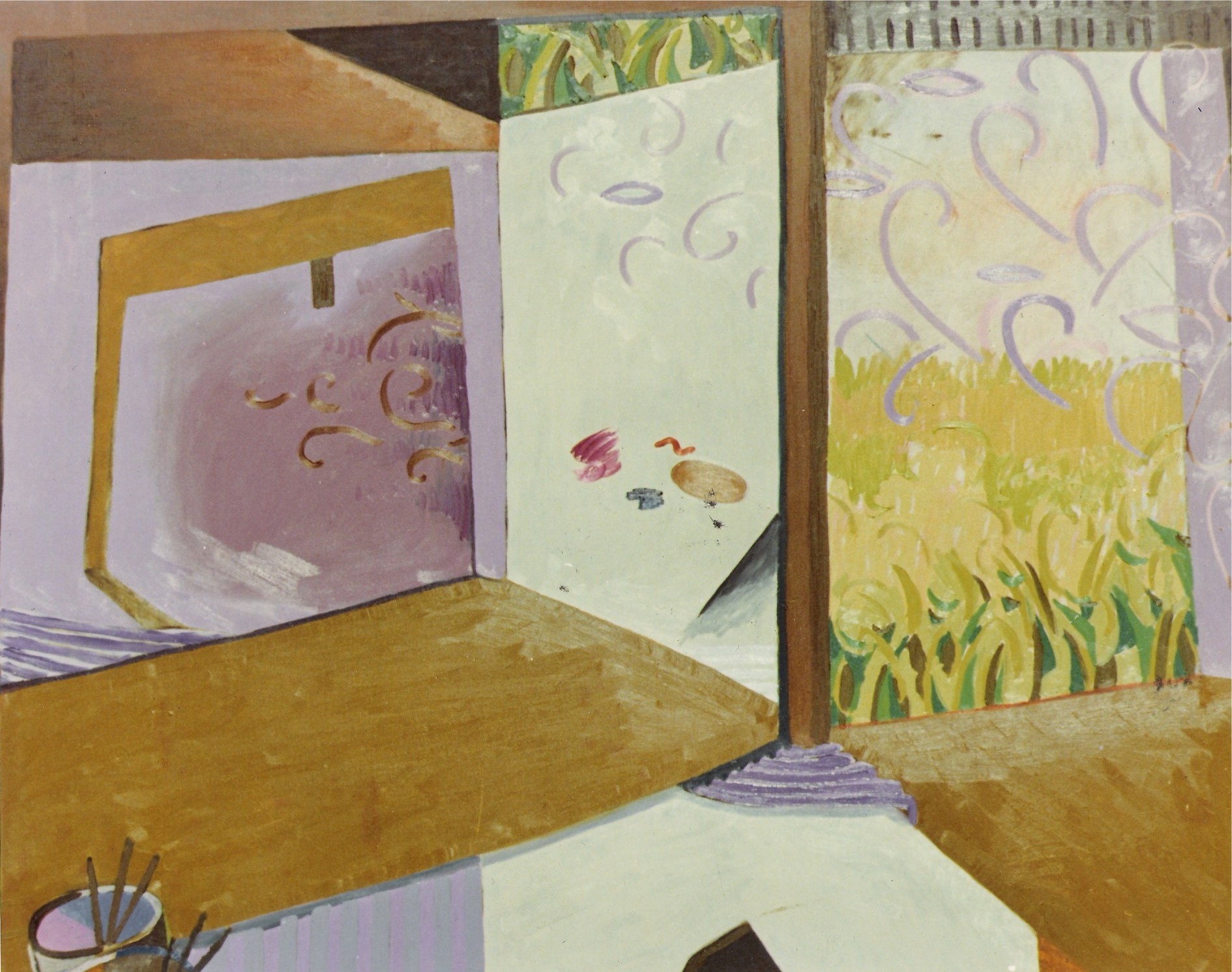
Studio Table was an important work. It established a bridge between ideas of simultaneity, inside/outside space and a fully realized painting. A big influence was Matisse as a motif symbolized in size pattern relationships. Matisse was a master of suggesting spacial dimensions with simplified pattern. This was important to placing a long thread of reference to cubists. The painting was a successful translation of a long period of work into my own voice. |
Studio Table, 1969 Glen River - Artist Oil on canvas, 4 x 5 feet | |
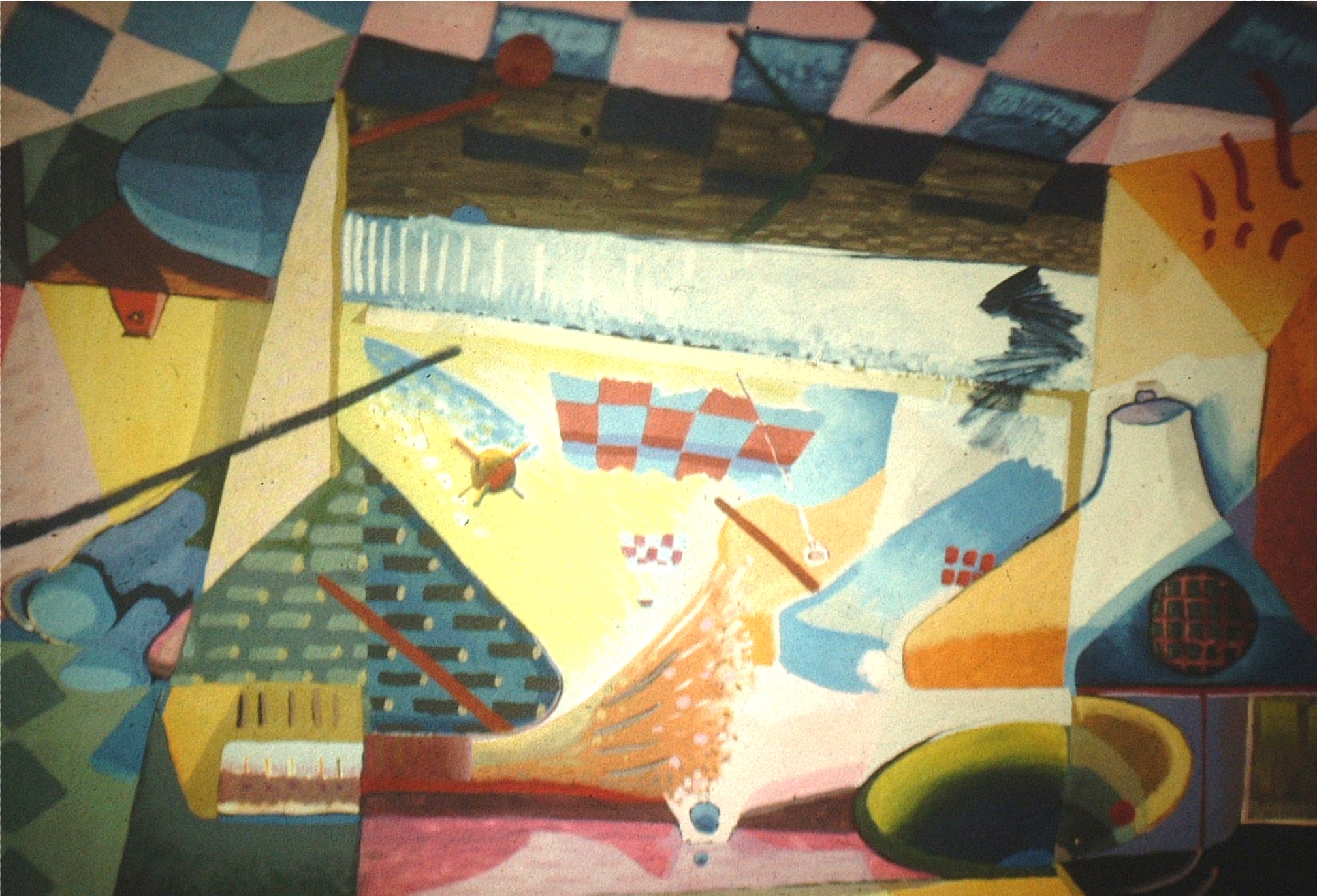
Surreal 2 was an abstract world where shapes functioned as objects in space. The space is formed with principals of repeating size/receding references. While they remain in the world of marks organized to underline structural dynamics, they cleave to objective units rather than pattern/field configuration. There is always a pull in this type of abstraction between a force of becoming and a state of being. In Tolstoy a chaos of all possibility exists in energetic pattern. In Surreal 2, a defined space is housing a specific set of rules making relationships dependent in their partnership to an evolving future. The super-saturated gives way to the commitment of specific being. |
Surreal 2, 1969 Glen River - Artist Oil on panel, 24 x 32 in. | |
| Tolstoy, 1970 Glen River - Artist Oil on canvas, 20 x 20 in. In a conversation with my cousin about this painting, I remarked that few "got" my discovery of a super-saturated space-particle environment, where all form could exist simultaneously. She laughed and said, "Yea, well it is not like a novelette which most people are used to reading. It's more like Tolstoy's War And Peace. The cubist opening up of planes, space, marks and the metaphorical organization of mind as an instrument of perception, was summed up in this work for me in that an axis mundi of (point of view) all points, pattern, individual marks, and field are defined. The planes of space are populated with marks and pattern describing their position, until all the space is filled effecting a point of view which can move into any spatial plane equally. Similarly color separation, intensity, and diversity is spread across the spectrum to effect a uniformity of field experience. |
||
Tony's Cups is another step along the path of field forms, pattern, marks, and the image in objective space. In this work which again is part of a series, the reference to object is near representational description. The placing of image as a unit in the repetition makes the inference that an image can work as a mark does when used as pattern describing a field form. The definition of what is an abstract elliment supporting an objective world is turned around. The image is now a supporting unit describing the abstract configuration. The point is that focus and frame of reference changes the role of elements and our definitions of what is objective and what is abstract. |
Tony's Cups, 1970 Glen River - Artist Oil on canvas, 16 x 20 in. | |

The relationship between eye and mind is clearly demonstrated by exercises in optical perception. A simple exercise is in shifting awareness from habitual centers of focus to peripheral awareness. In the painting "The Milk Glass" the center of focus was the milk glass. The field of view becomes increasingly abstracted as we move away from the focal center. I was painting what I saw. The exercise was to stare at the milk glass but "see" what the visual field looks like without moving the fixed point of focus. The point of this exercise is to understand how the mind is constantly refocusing and editing an experience of seeing which is a dynamic summation of perception. |
The Milk Glass, 1970 Glen River - Artist Oil on canvas, 16 x 20 in. | |
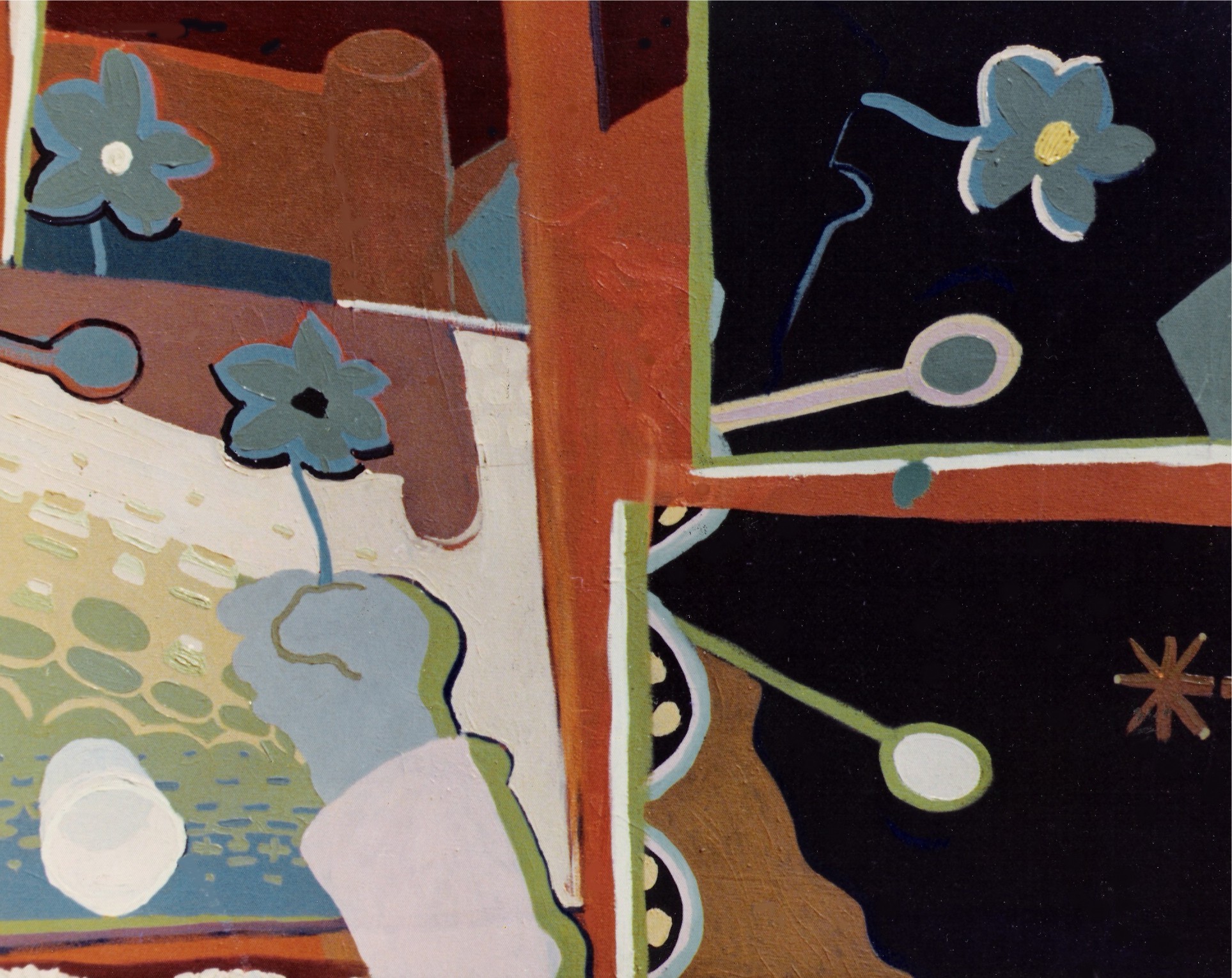
|
Similtainaty, 1969 Glen River - Artist Oil on canvas, 24 x 32 in. This painting was a further inititution of the proto-space where dimentional axis-mundi refered to super symmetry. | |
Old Man is an investigation of cellular field and image in balanced relativity. The idea is similar to field forms making up a picture, but with a stage on a cellular lever competing with the image of the old man. There was an other image which was, lost in the painting process. The organization was organic dominating a grid. The grid is conceptually geometric but the mathematical feel is overwritten by the organic process. |
Old Man, 1968 Glen River - Artist Oil on canvas, 12 x 12 in. | |
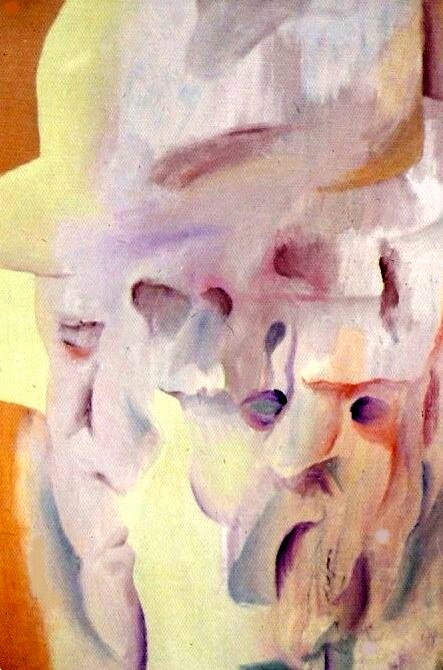
|
Man 3, 1970 Glen River - Artist Oil on canvas, 14 x 18 in. | |
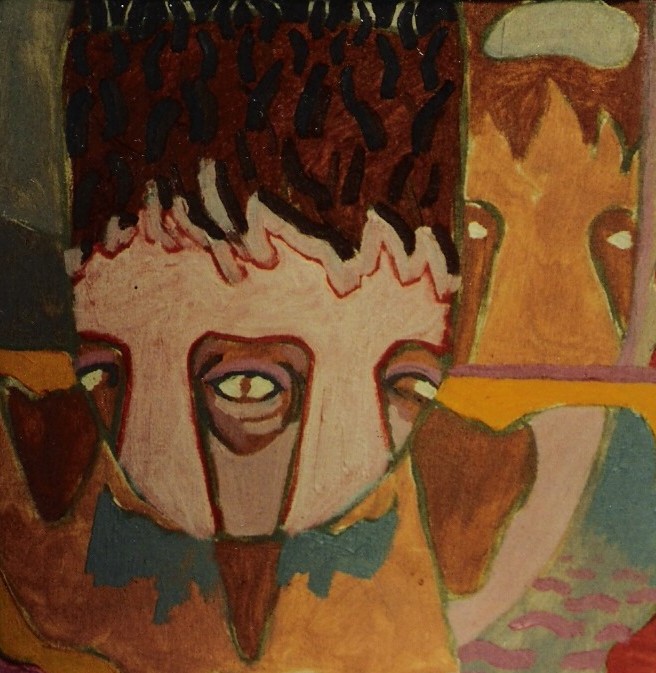
|
S. Mirror 44, 1969 Glen River - Artist Oil on canvas, 12x 12 in. | |
| Inter Space 15, 1971 Glen River - Artist graphite on paper, 8 x 10 in. | ||
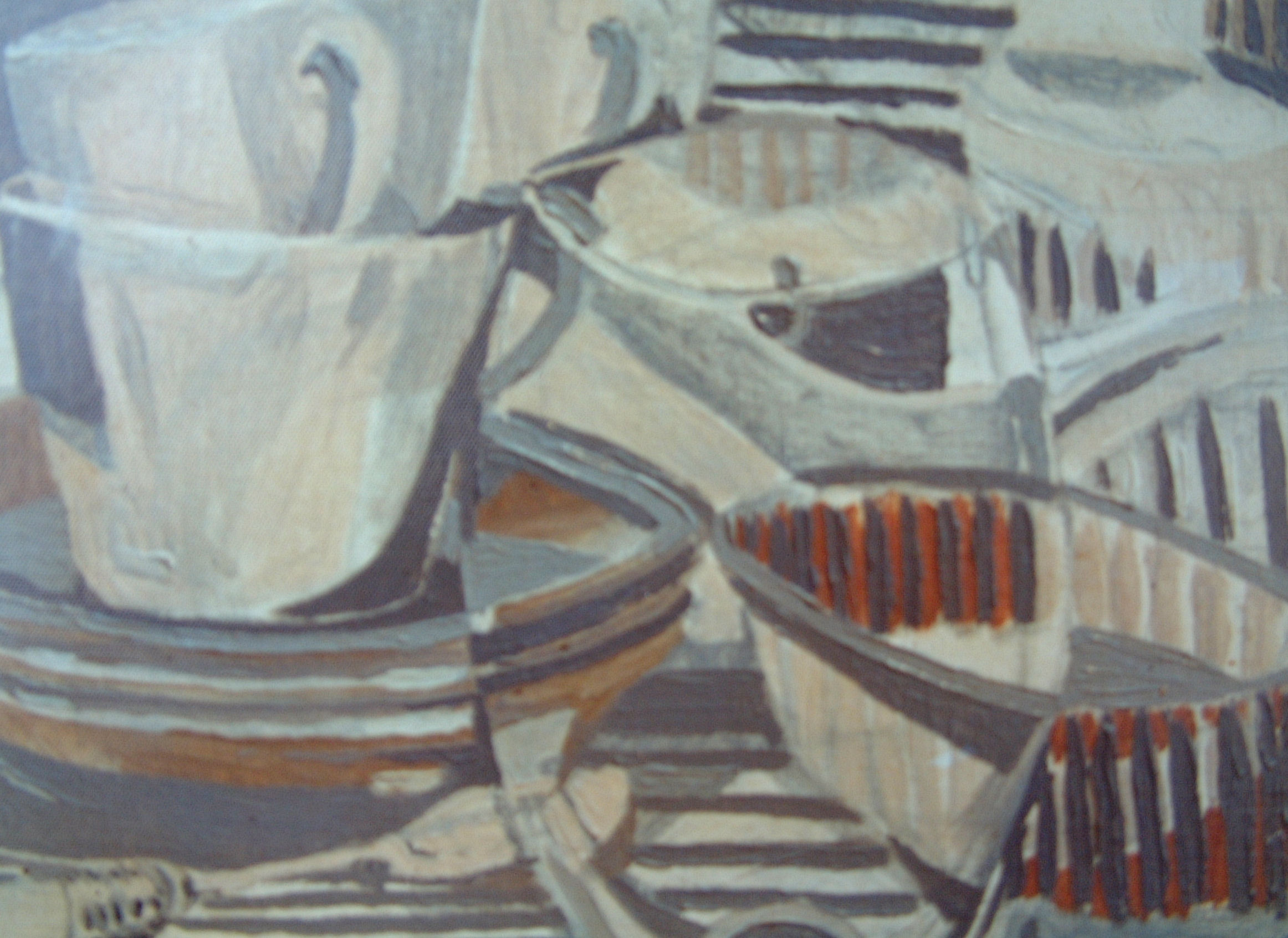
|
Cups C, 1970 Glen River - Artist Oil on panel, 12 x 16 in. |
|

|
Structrial Dynamics D 10, 1971 Glen River - Artist graphite on paper, 8 x 10 in. | |

|
Geometric Prophet, 1970 Glen River - Artist Oil on panel, 16 x 20 in. | |
| Cellurlar Starcase, 1974 Glen River - Artist Graphite on paper, 8.5 x 11 in. | ||
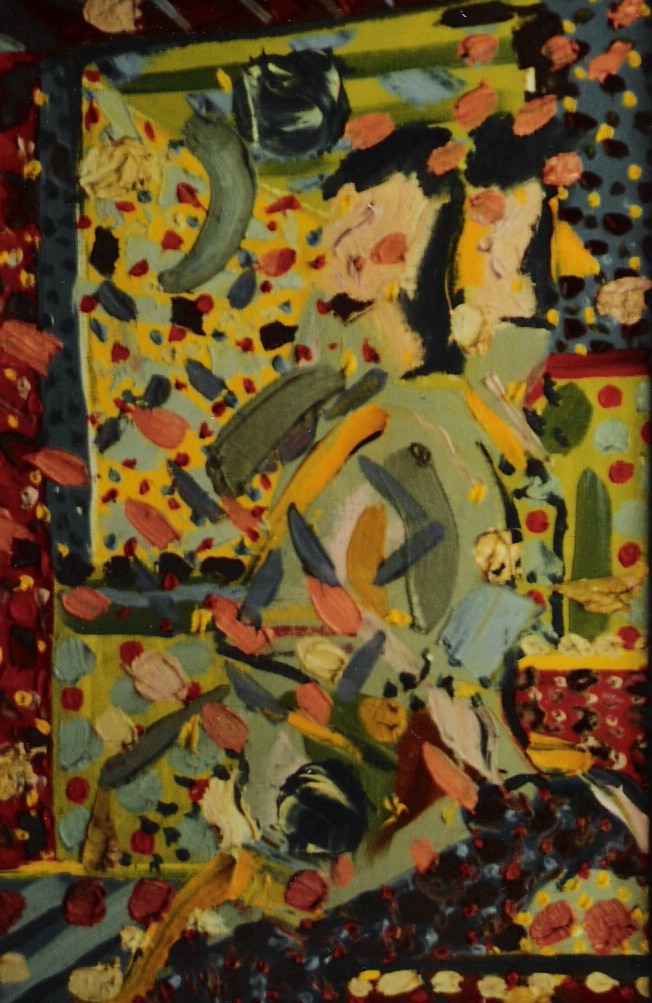
|
Mad Monk Series, 1971 Glen River - Artist Oil on panel, 16 x 20 in. LaCoste, France | |

|
Pallette, 1971 Glen River - Artist Oil on panel, 16 x 20 in. | |
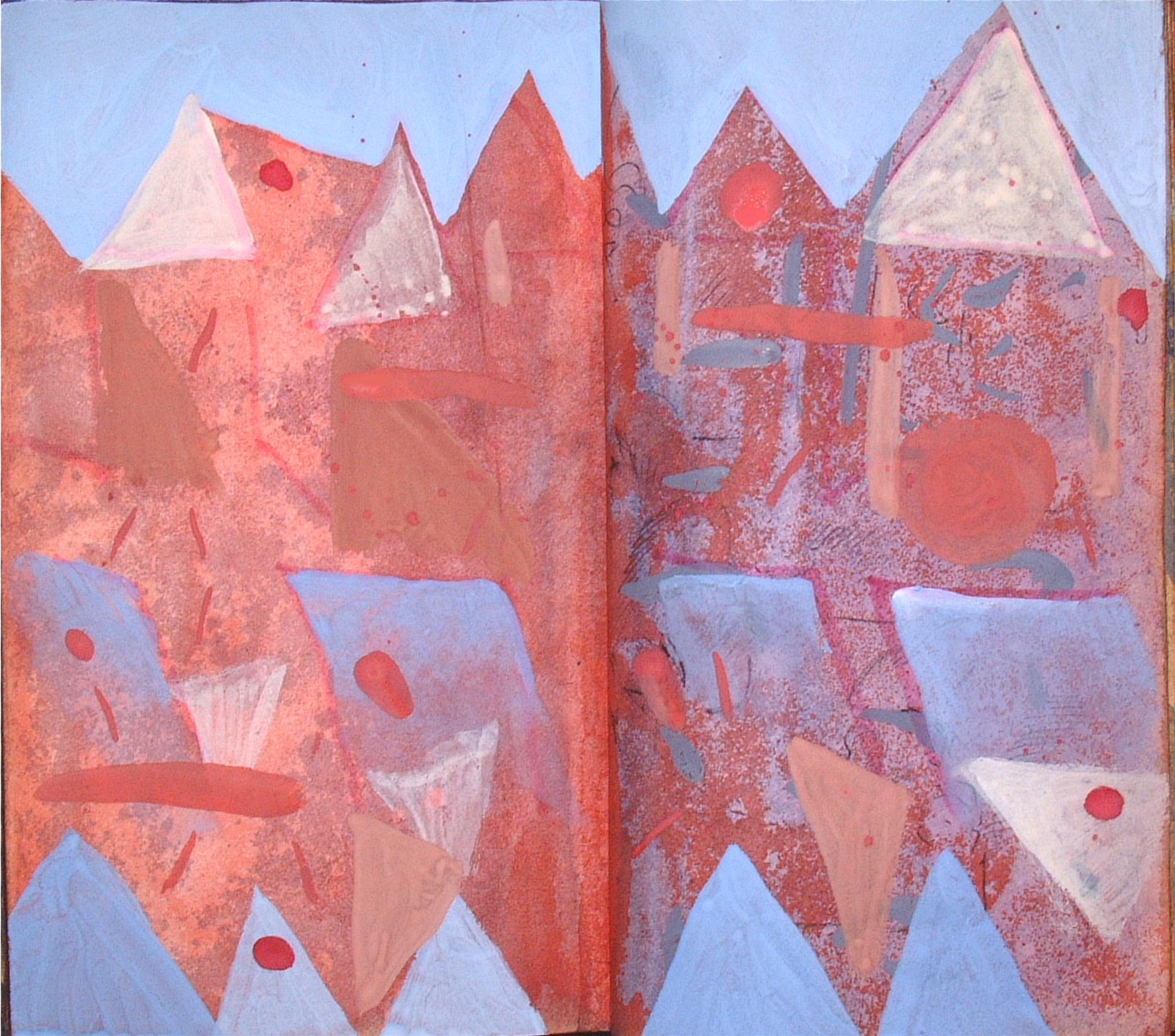
|
Page from Paris Journal, 1971 Glen River - Artist Oil on panel, 16 x 20 in. | |
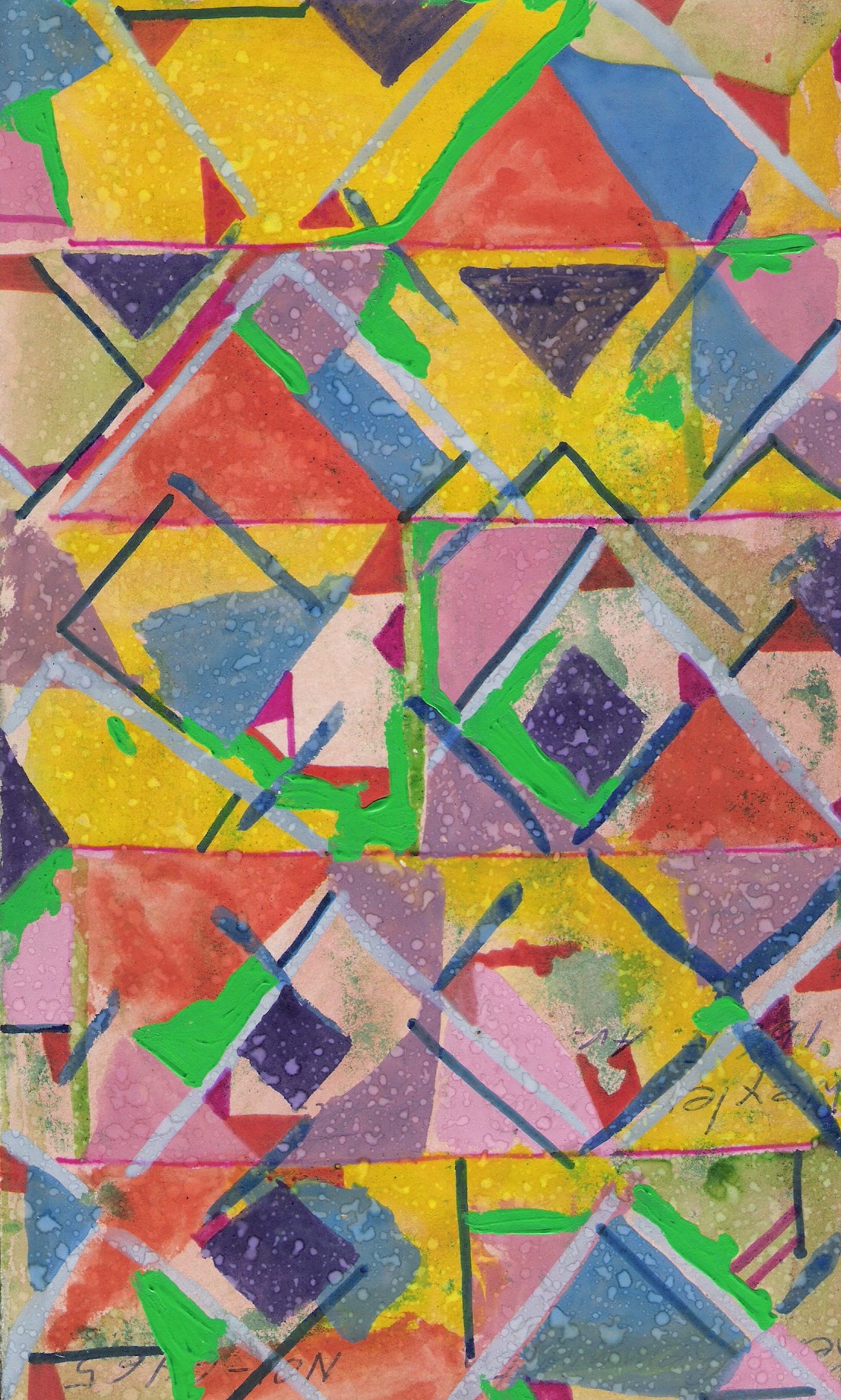
|
Grid 2, 1972 Glen River - Artist Oil on panel, 16 x 20 in. |
|
This playful reference to Brock, broke down borders between the interior space of the cubist concept and a pictorial space where the image of the artist exists. There were consistent reactions among non artists. They seemed upset by this painting and felt threatened by it. I presumed that the image some how evoked sub-conscious associations, or threatened a sense of solidity. |
Brock, 1980 Glen River - Artist Oil on paper, 16 x 20 in. | |
| Head, 1982 Glen River - Artist Oil on panel, 16 x 20 in. | ||
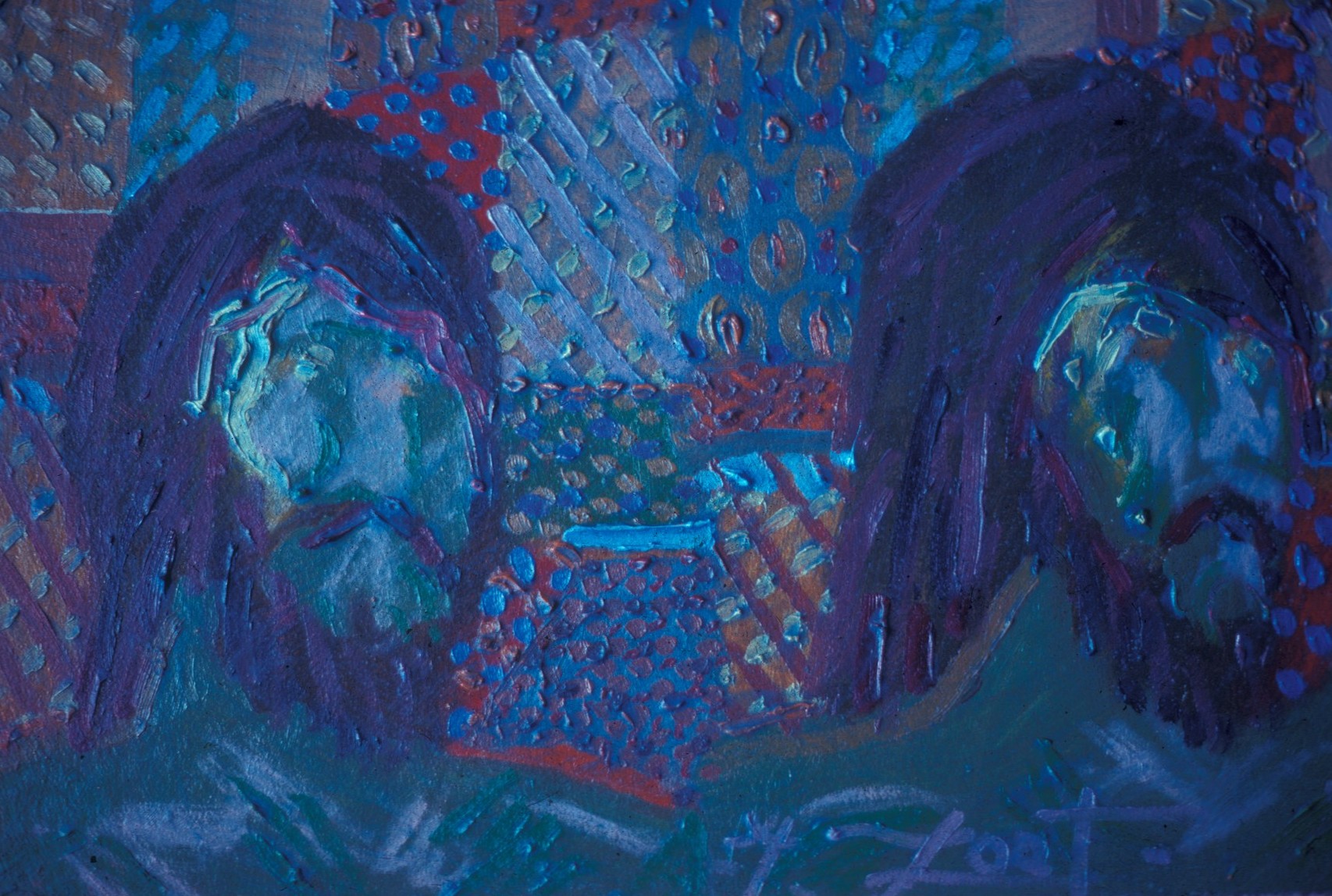
|
Heads 2, 1976 Glen River - Artist Oil on canvas, 16 x 20 in. | |

|
ivilization C 1, 1975 Glen River - Artist Oil on panel, 16 x 20 in. | |
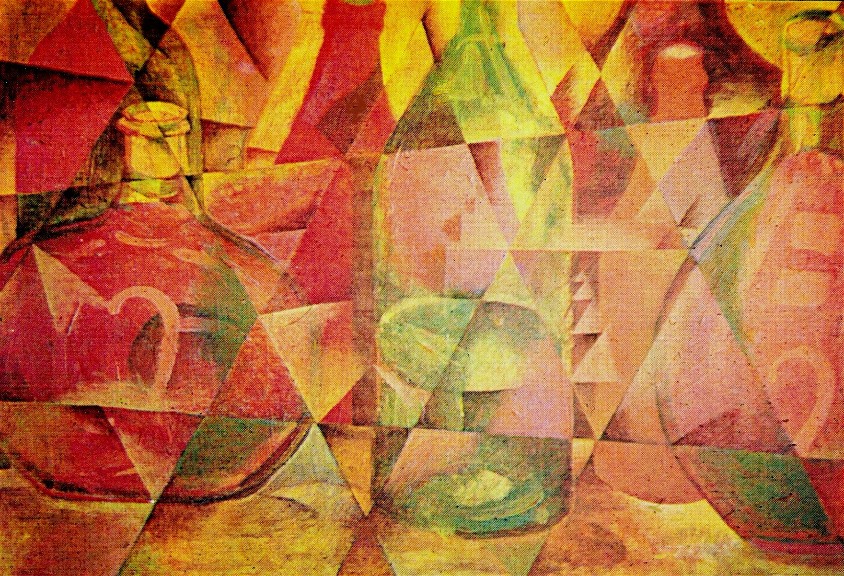
|
Bottles 3, 1975 Glen River - Artist Oil on canvas, 16 x 20 in. |
|
| Mary Ann, 1976 Glen River - Artist Oil on canvas, 16 x 20 in. | ||

|
Civilization P, 1975 Glen River - Artist Oil on panel, 16 x 20 in. \ | |
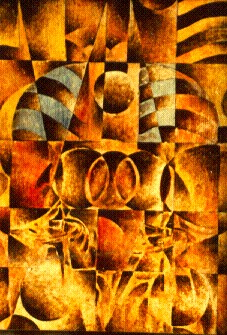
|
Civilization P 4, 1975 Glen River - Artist Oil on panel, 16 x 20 in. | |
| Setting B28, 1978 Glen River - Artist Acrylic on paper, 11 x 14 in. |
||
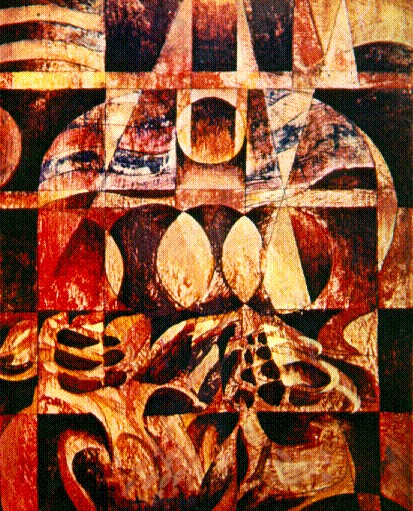
|
Civilization P 1, 1975 Glen River - Artist Oil on panel, 16 x 20 in. | |
|
Marcel Duchamp. Nude Descending a Staircase, No. 2 (1912). Oil on canvas. 57 7/8" x 35 1/8". Philadelphia Museum of Art.
Duchamp's first work to provoke significant controversy was Nude Descending a Staircase, No. 2 (Nu descendant un escalier n° 2) (1912). The painting depicts the mechanistic motion of a nude, with superimposed facets, similar to motion pictures. It shows elements of both the fragmentation and synthesis of the Cubists, and the movement and dynamism of the Futurists. He first submitted the piece to appear at the Cubist Salon des Indépendants, but jurist Albert Gleizes asked Duchamp's brothers to have him voluntarily withdraw the painting, or to paint over the title that he had painted on the work and rename it something else. Duchamp's brothers did approach him with Gleizes' request, but Duchamp quietly refused. Of the incident Duchamp later recalled, "I said nothing to my brothers. But I went immediately to the show and took my painting home in a taxi. It was really a turning point in my life, I can assure you. I saw that I would not be very much interested in groups after that." He later submitted the painting to the 1913 "Armory Show" in New York City. The exhibition was officially named the International Exhibition of Modern Art, displayed works of American artists, and was also the first major exhibition of modern trends coming out of Paris. American show-goers, accustomed to realistic art, were scandalized, and the Nude was at the center of much of the controversy. | ||
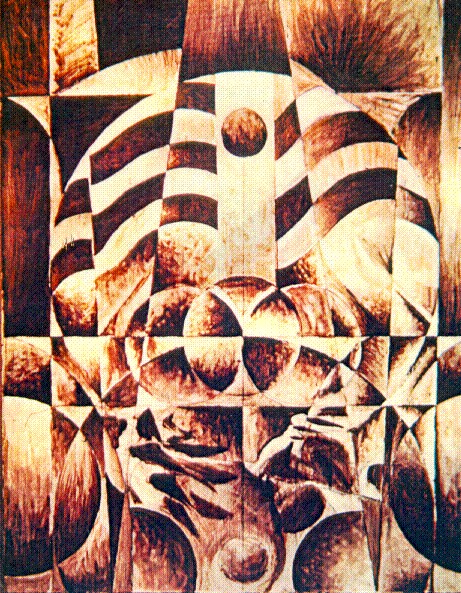
|
Civilization P 2, 1975 Glen River - Artist Oil on panel, 16 x 20 in. | |
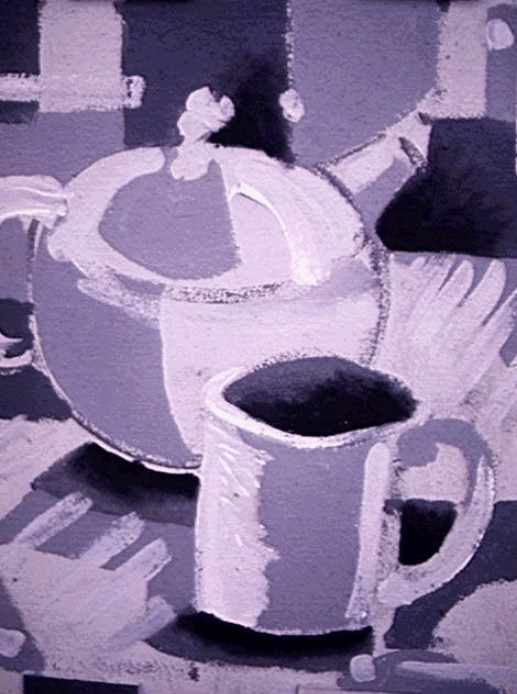
|
Still Life 2, 1976 Glen River - Artist Oil on panel, 16 x 20 in. | |
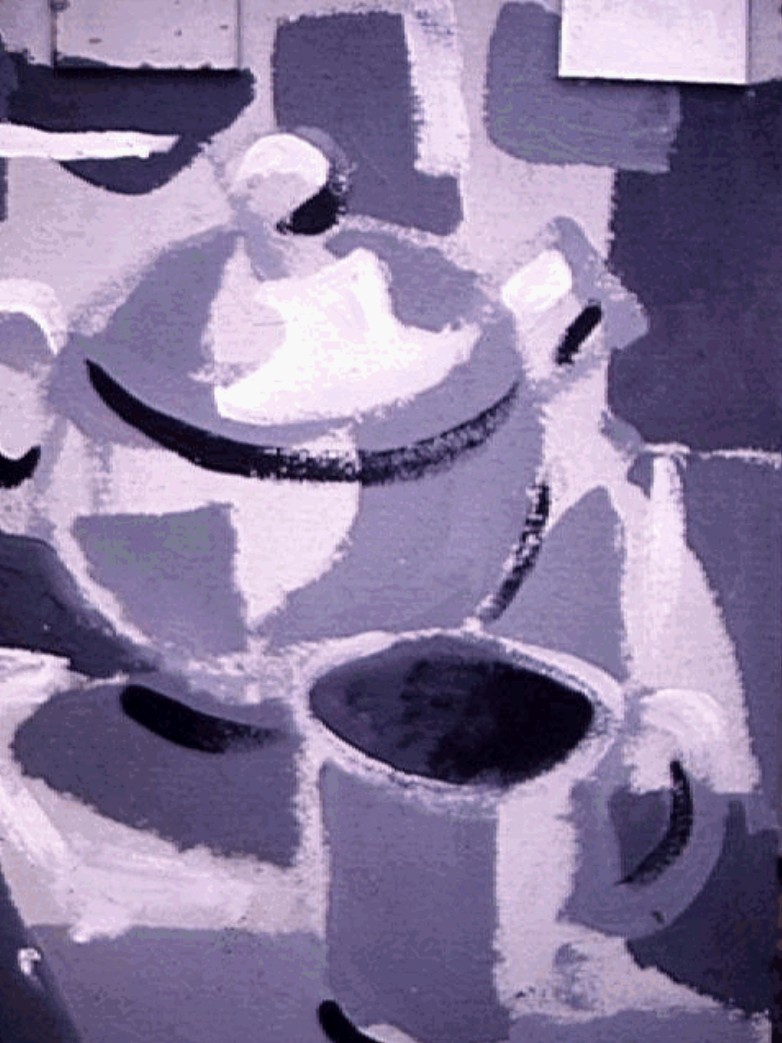
|
Still Life 3, 1976 Glen River - Artist Oil on panel, 16 x 20 in. | |
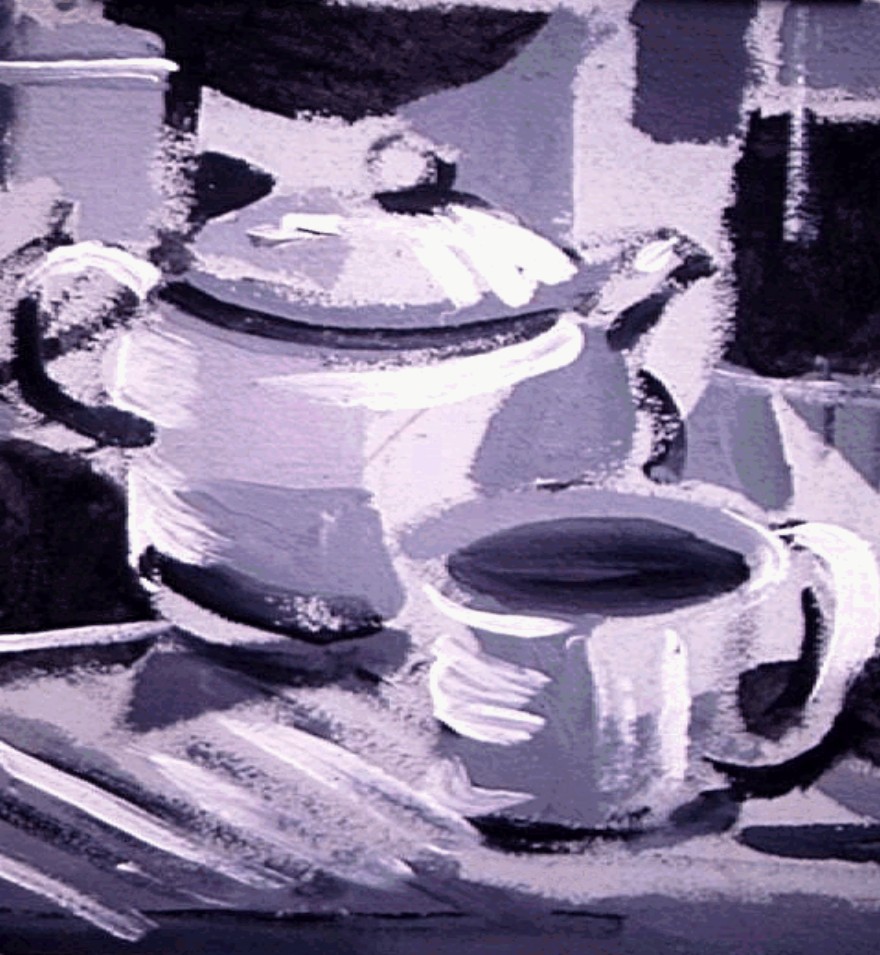
|
Still Life 4, 1976 Glen River - Artist Oil on panel, 16 x 20 in. | |
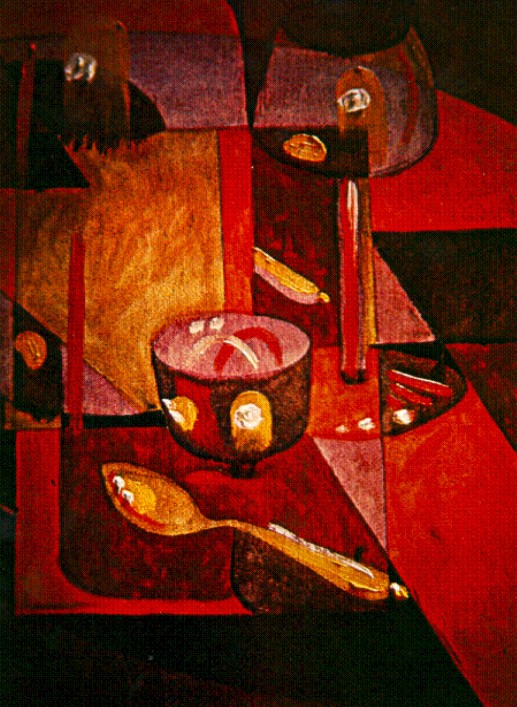
|
Still Life 5, 1976 Glen River - Artist Oil on panel, 16 x 20 in. | |
| Carpenter, 1978 Glen River - Artist Oil on panel, 16 x 20 in. | ||

|
The Phrophet, 1981 Glen River - Artist Oil on panel, 14x 18 in. | |
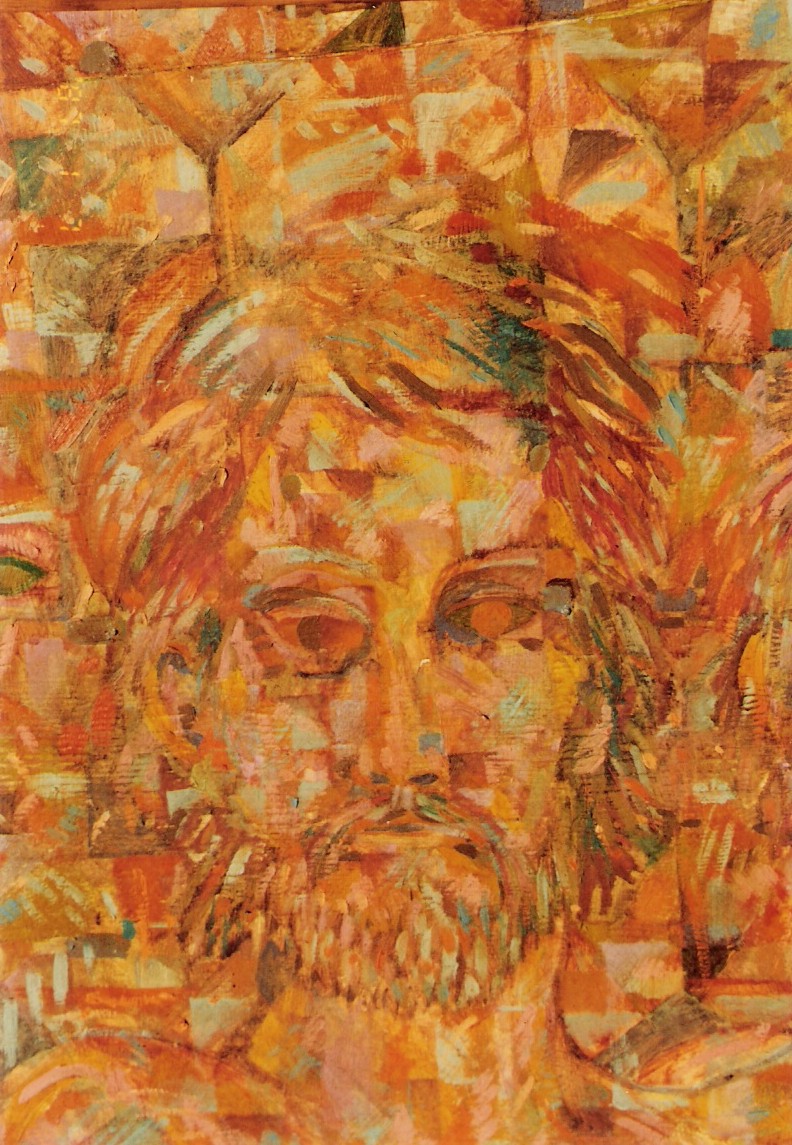
|
Self Portrait, 1985 Glen River - Artist Oil on panel, 18 x 24 in. | |
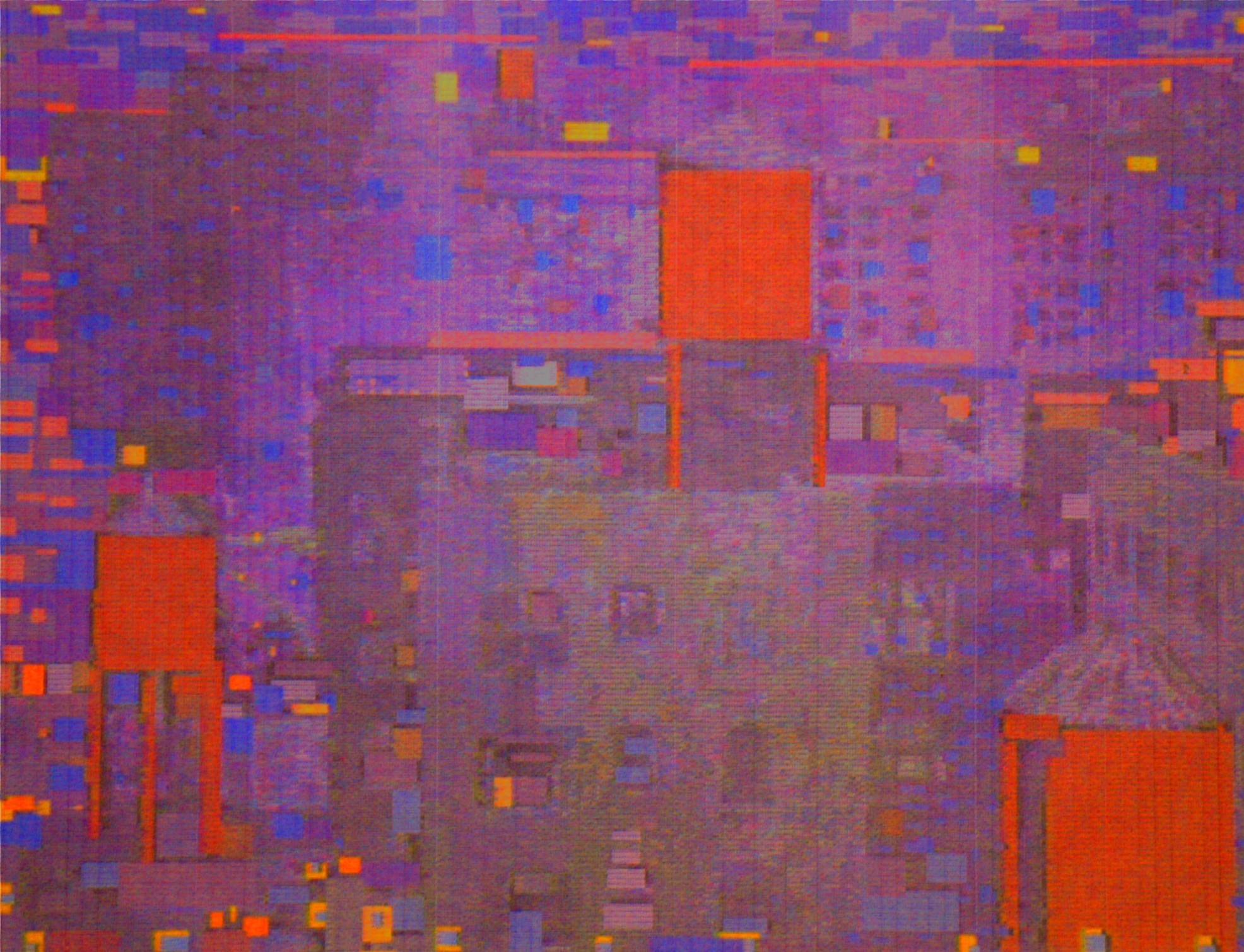
|
Rooftops 4, 1985 Glen River - Artist Dot Matrix on paper, 8 x 10 in. | |
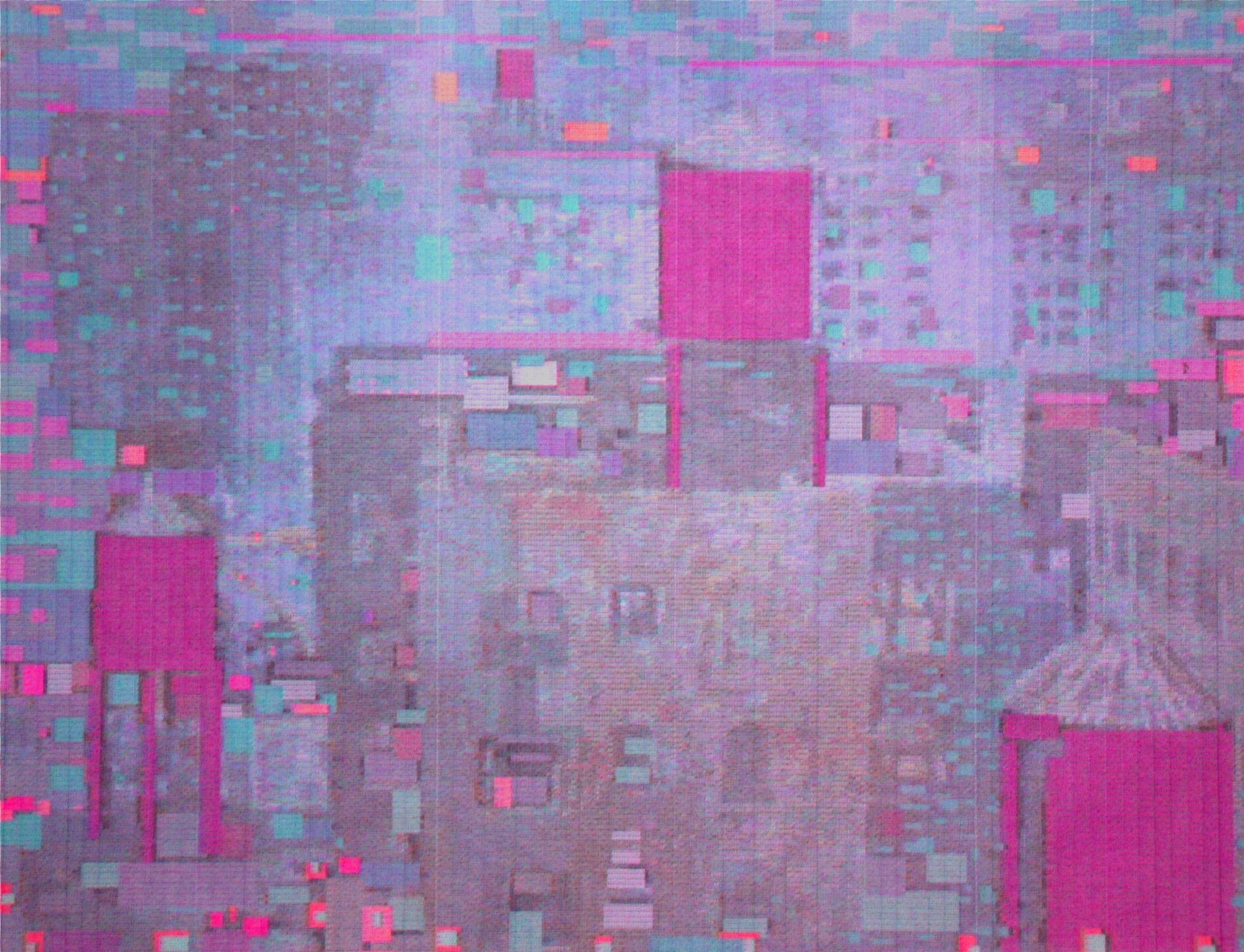
|
Rooftops 3, 1985 Glen River - Artist Dot Matrix on paper, 8 x 10 in. | |
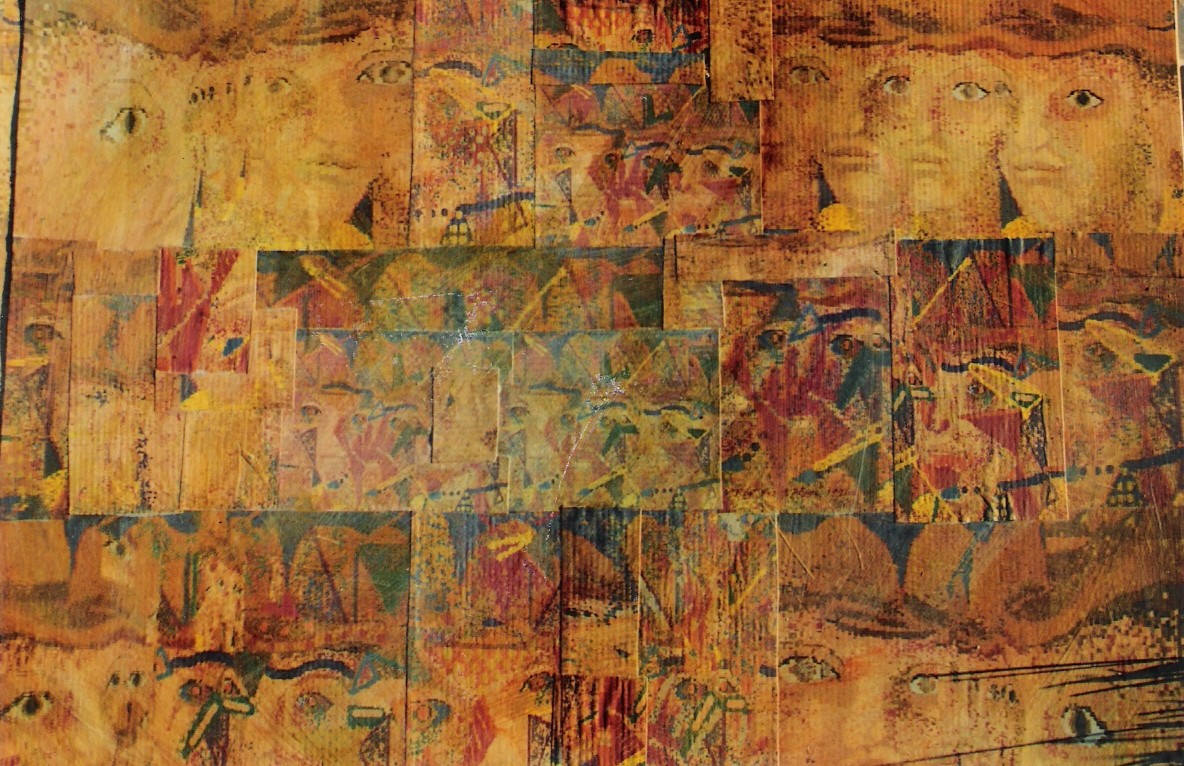
|
Rig 82, 1986 Glen River - Artist Mixed Media on paper, 24 x 36 in. | |
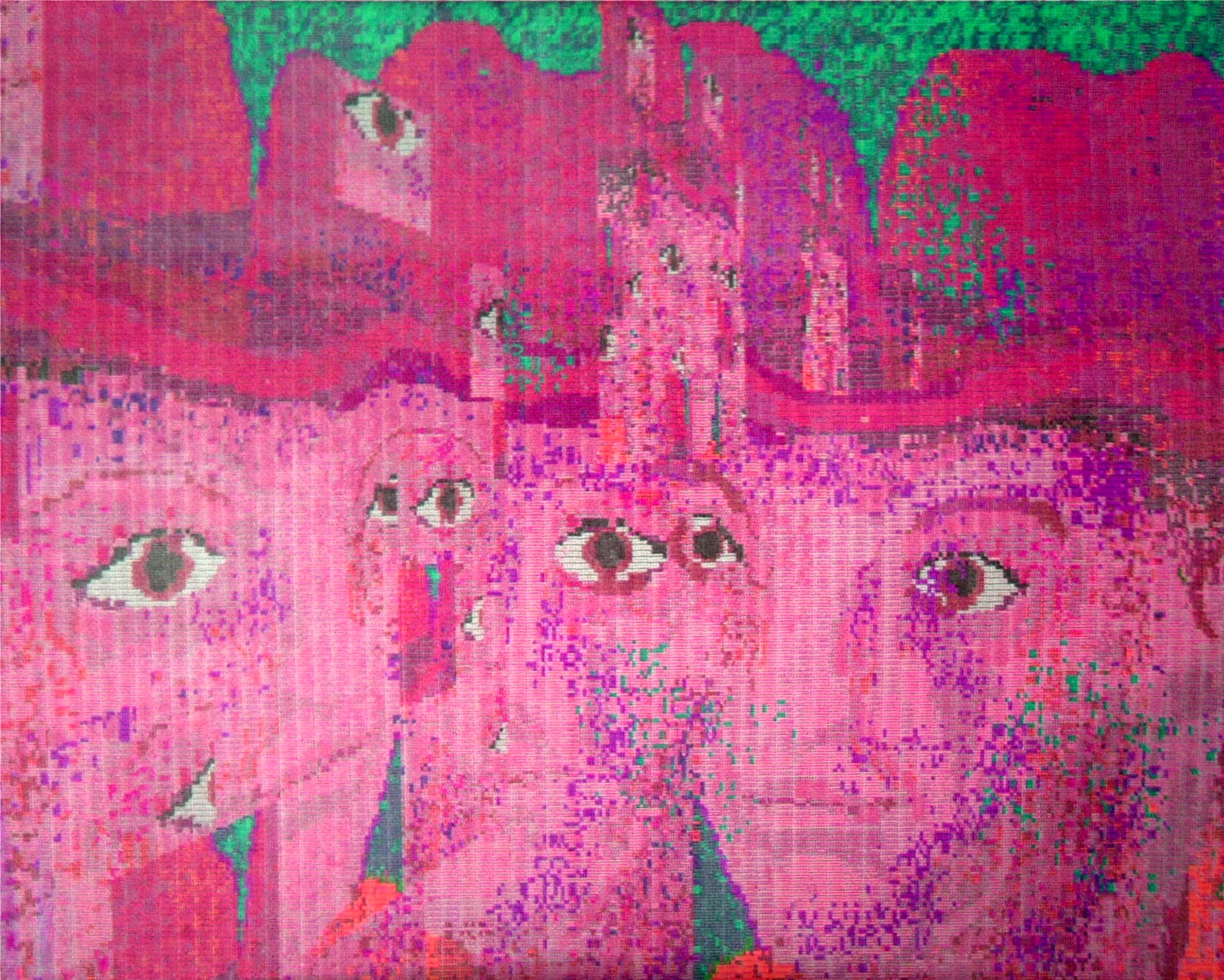
|
Rig 3, 1986 Glen River - Artist Dot Matrix on paper, 8.5 x 11 in. | |
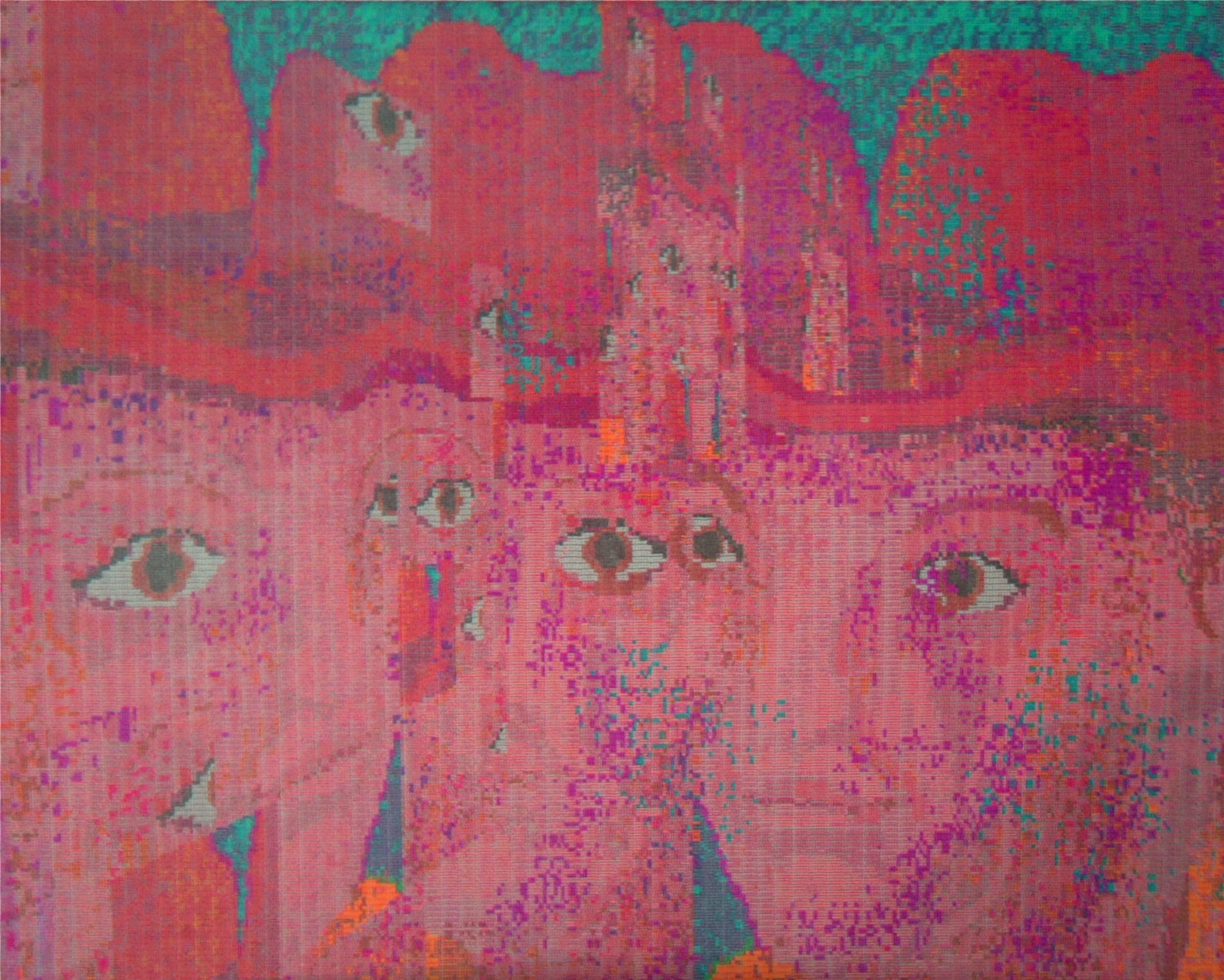
|
Rig 2, 1986 Glen River - Artist Dot Matrix on paper, 8.5 x 11 in. | |
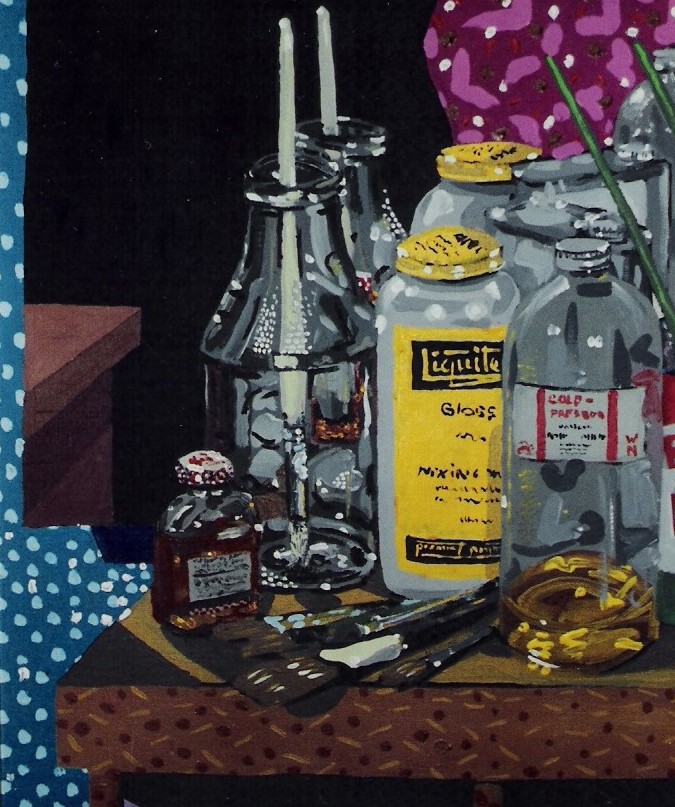
|
Studio Setting 8, 1986 Glen River - Artist Acrylic on canvas, 18 x 24 in. | |
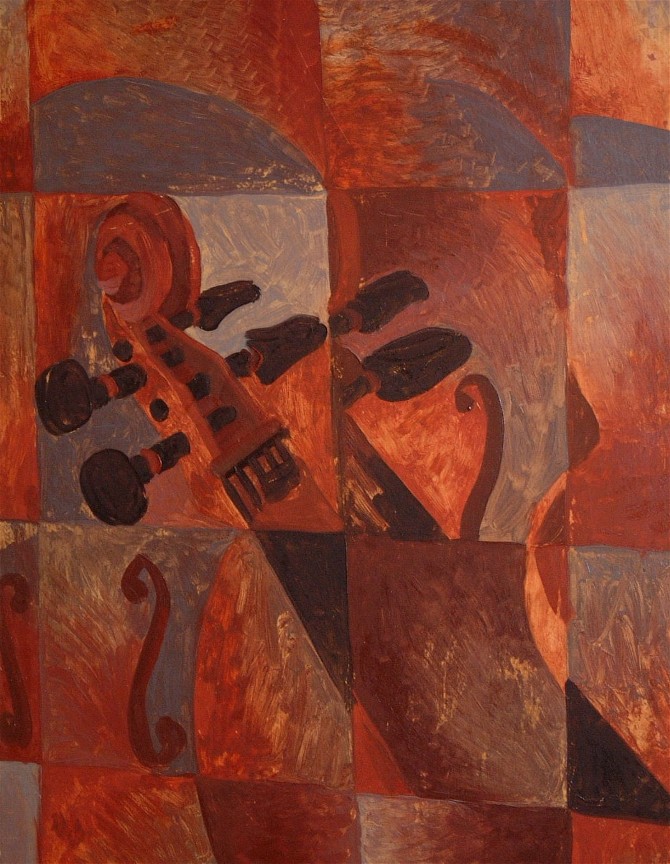
|
Red Violine, 1987 Glen River - Artist Oil on panel, 16 x 20 in. | |
| Cuttingboard Mirror, 1987 Glen River - Artist Oil on canvas, 24 x 30 in. The cubist intellectual revolt against the artistic expression of previous eras, centered around the minds eye. They employed an analytic system in which the three-dimensional subject (often still life) was fragmented and redefined within a shallow plane or within several interlocking and often transparent planes. My own interpretation includes the conceptual "Shamans Mirror". An ongoing interest is the re-allignment of primitave imagery and psycholigical and metaphysical modernist symbols associated with Platonic form. The Cuttingboard Mirror was a re-intagration of the concept with realism. | ||
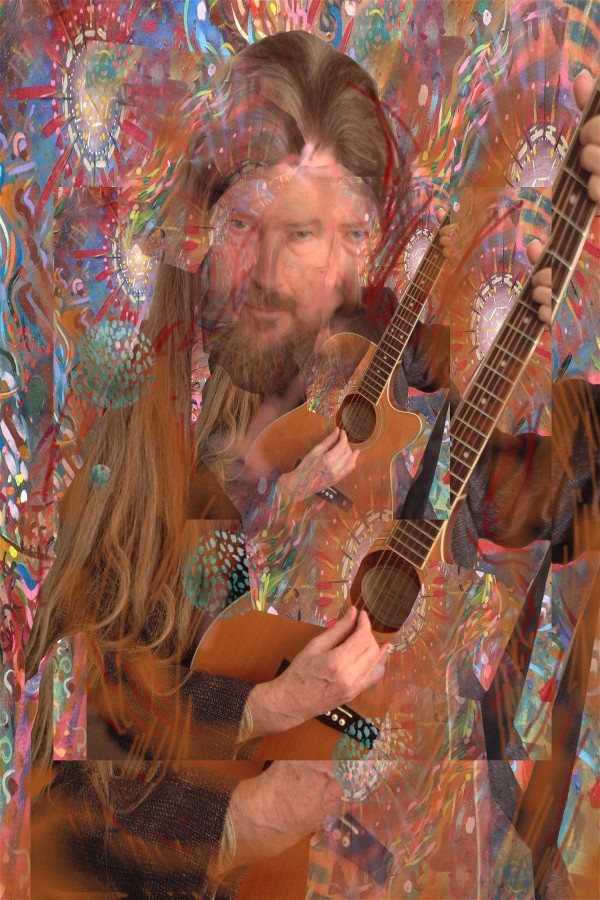
|
Guitar Player 4-5, 2004 Glen River - Artist Mixed Media, 16 x 20 in. | |

|
Guitar Player 2 Text, 2004 Glen River - Artist Mixed Media, 16 x 20 in. |
|
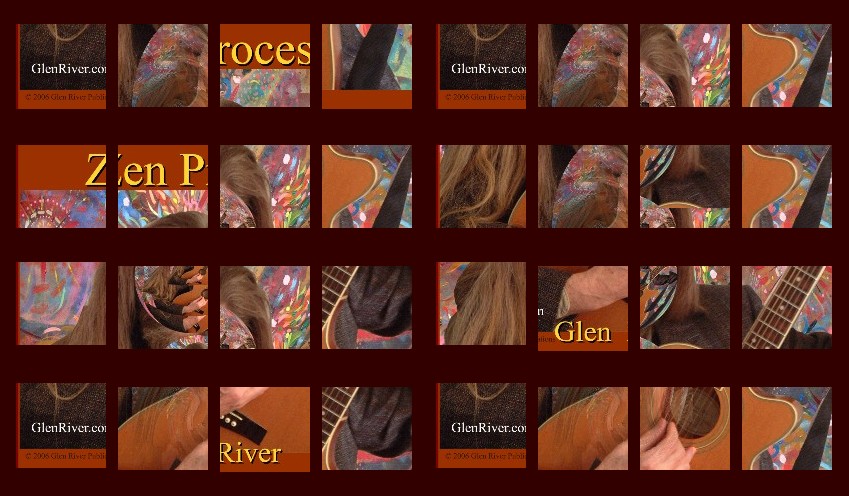
|
Guitar Player B-2, 2004 Glen River - Artist Mixed Media, 16 x 20 in. | |

|
Guitar Player B, 2004 Glen River - Artist Mixed Media, 16 x 20 in. | |
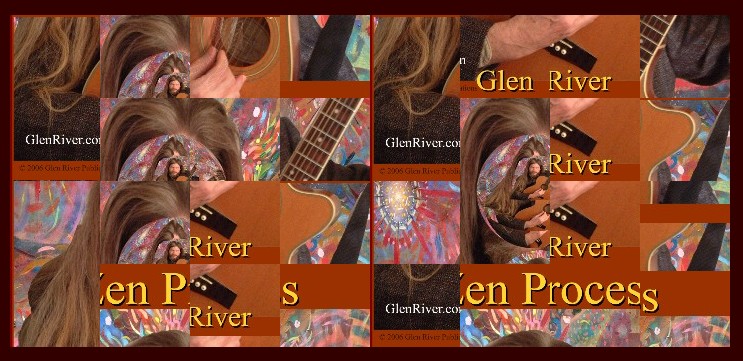
|
Guitar Player, 2004 Glen River - Artist Mixed Media, 16 x 20 in. P_cafe_rotate_0 | |
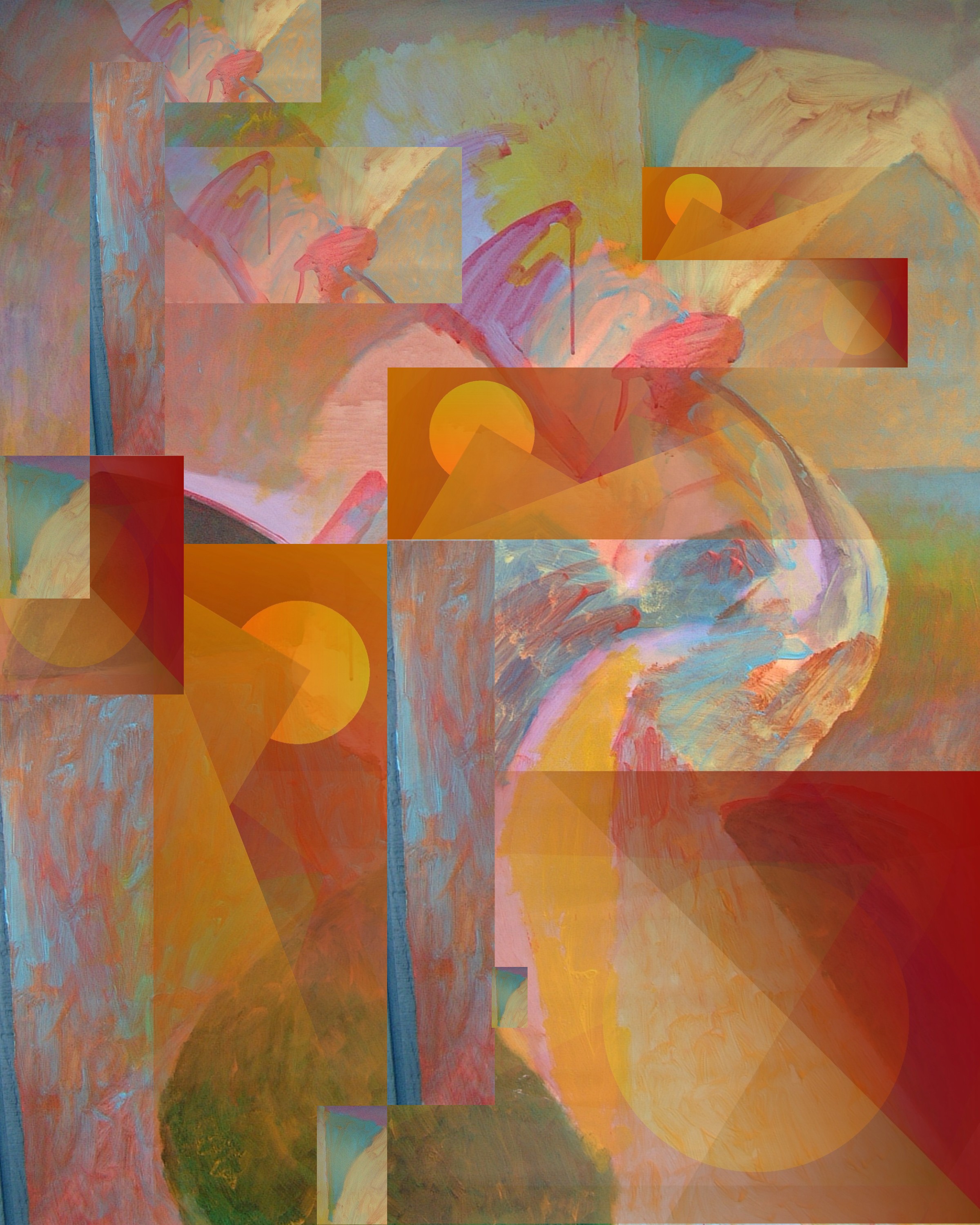
|
Organic Cube, 1004 Glen River - Artist Mixed Media, 8 x 10 in. | |
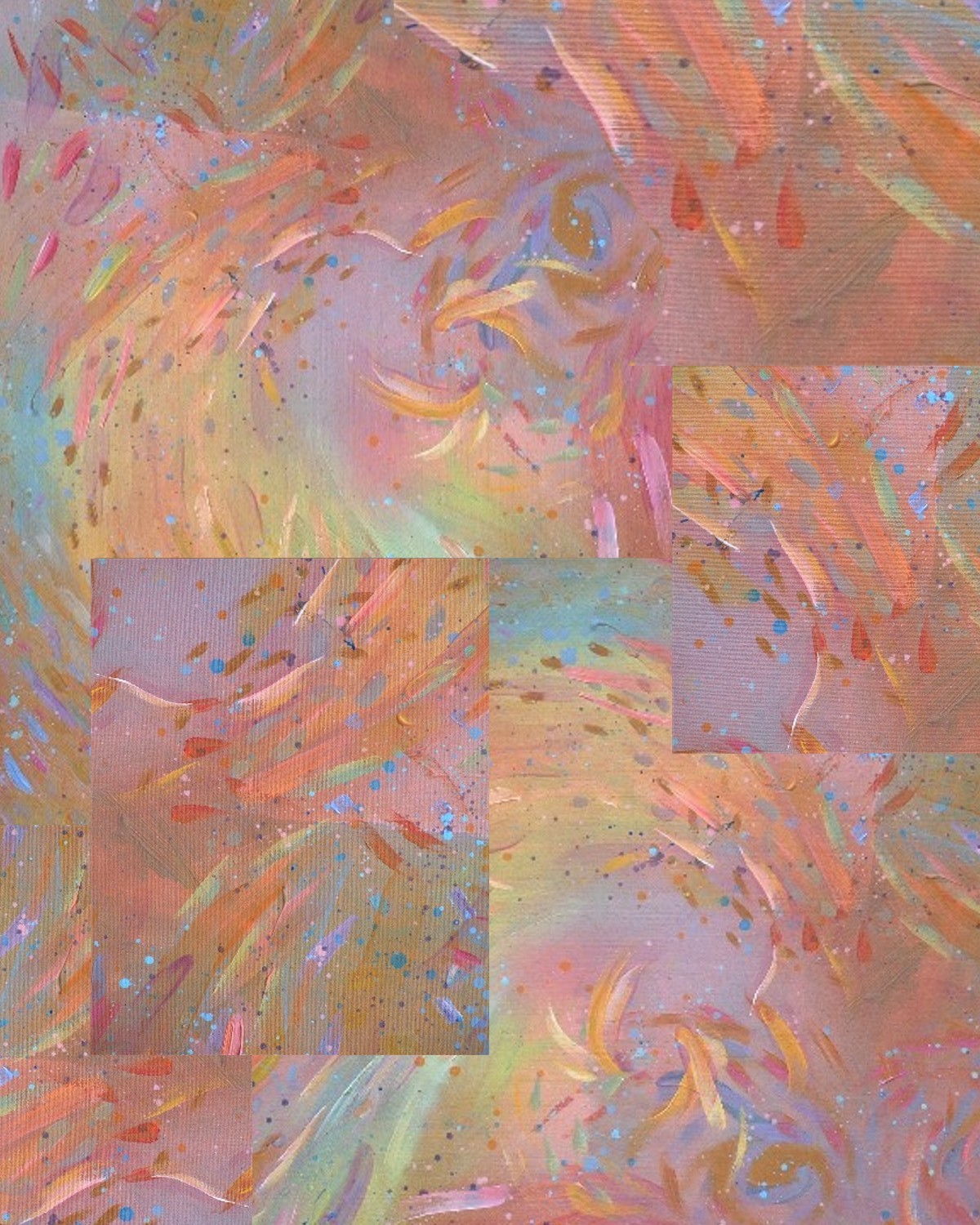
|
Kachina Splice, 2004 Glen River - Artist Mixed Media, 8 x 10 in. | |
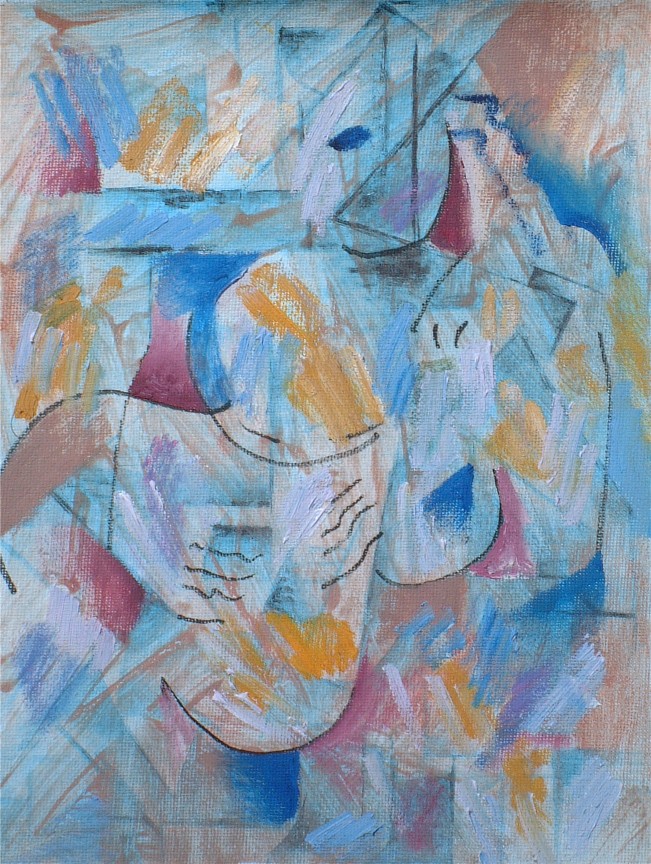
|
Guitar Player Blue, 2004 Glen River - Artist Mixed Media, 8 x 10 in. | |
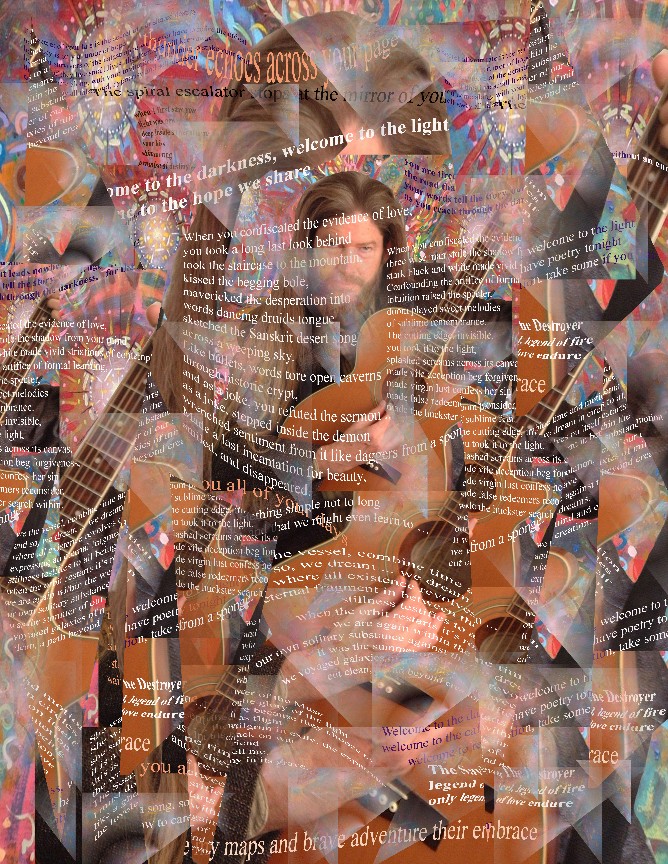
|
Guitar Player 10, 2004 Glen River - Artist Mixed Media, 16 x 20 in. | |
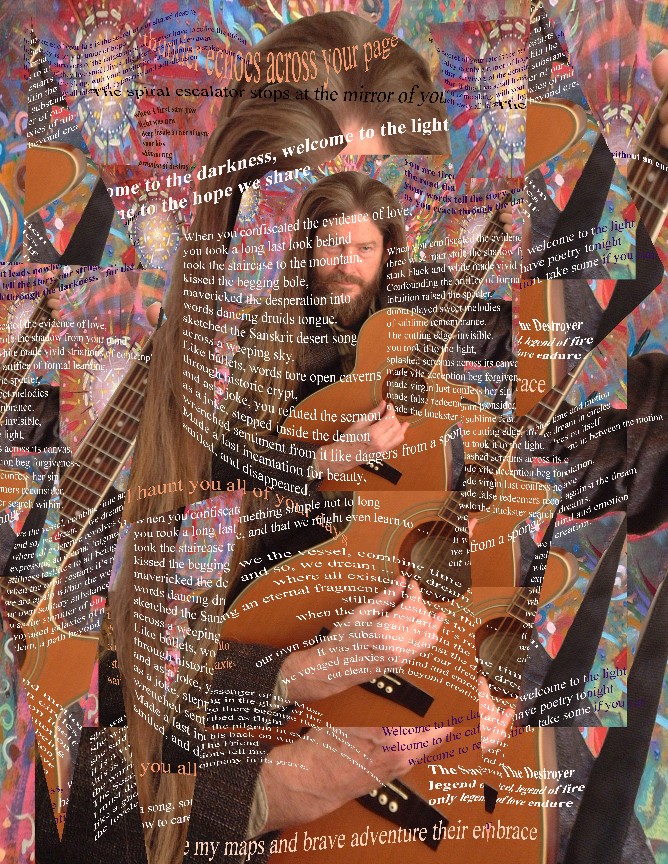
|
Guitar Player 6, 2004 Glen River - Artist Mixed Media, 16 x 20 in. Dynamic Web Art ~ Poetry Cafe | |

The Big Picture is an expression of my esthetic migration to a synthesis. My attitude toward creativity described as Zen Process takes the art to a new resolution. This particular resolution freezes time as well as parts of separate visions. The start of my path in art was the physical organization of light in the discipline of painting. The Big Picture Installation is 30 panels which are 20"x 30" each hung in a configuration of 6 columns and 5 rows. The approximate size of the complete installation is between 13' and 14' tall and 11' wide. The size and combination of images offers a new canvas able to encompass a greater scope. Some of the source materials are paintings originally created from 1965 through 2007. Between dissection and re-painting, the original context is drastically altered. The images and original intentions continue to succeed in this migration. The Big Picture is in fact a much closer depiction of how I experience the life in art construct. This view is now absorbed into my art and presented as an individual work. This work also depicts periods within my larger body of art. During these periods, fidelity to local discovery permeated my consciousness. My overview of a greater vision was realized in the compression of time. Part of my concept of art is art as intentional artifact of its time. |
Big Picture, 2008 Glen River - Artist Mixed Media, on 30 panels, each panel 20”X 30” Dynamic Web Art ~ Big Picture | |
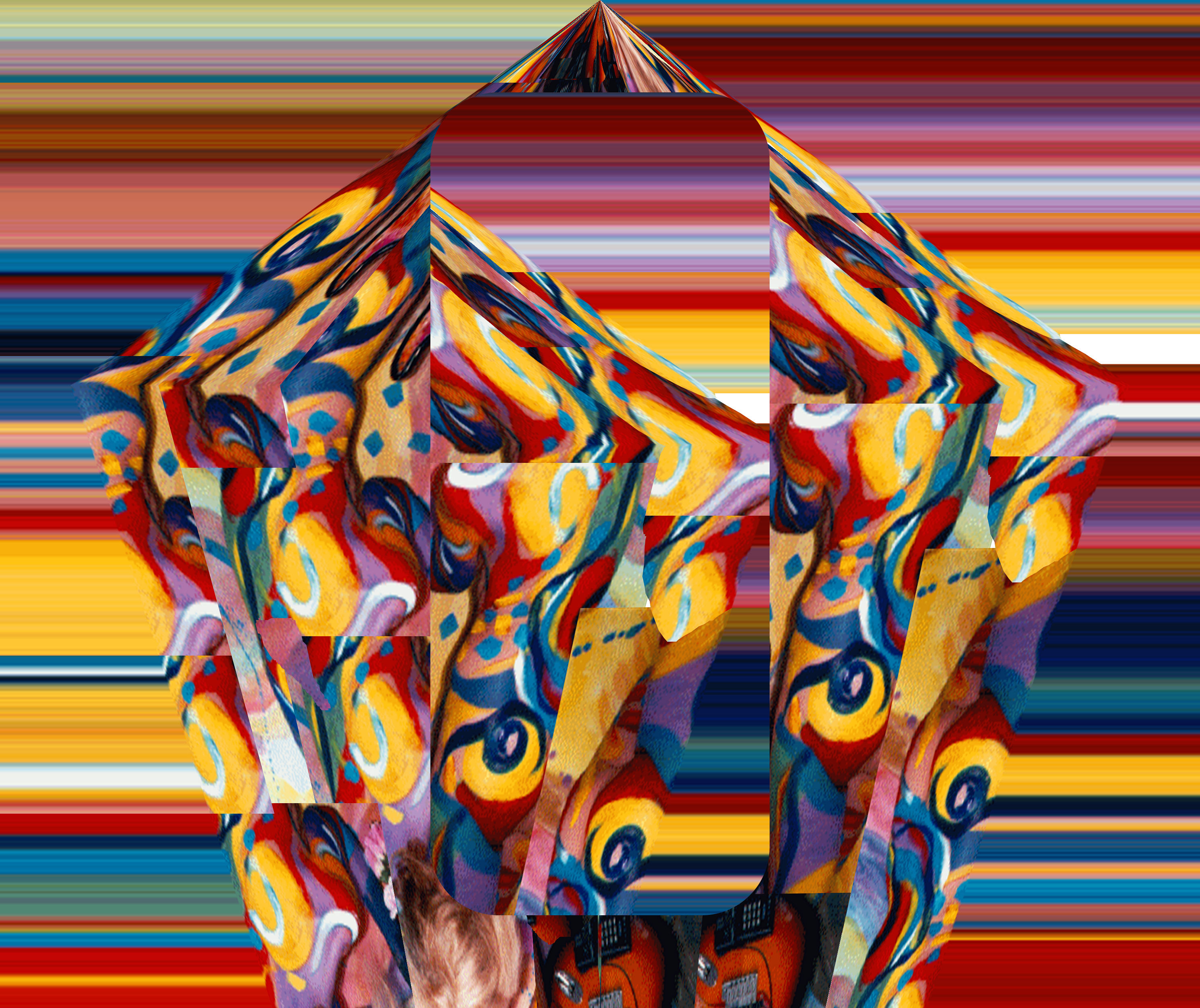
|
Savage Art was a period influenced by Andreas Lommel. In his work on shamanism
(Shamanism: The Beginnings of Art), Lommel draws a distinction between a medicine
person and a shaman. The shaman acts under an inner need. Essentially by means of
artistic productivity which always involves a state of trance.
My "Savage Art" was coming off the canvas and on to the human figure. The "Brett Series" are the foundation of Brett Y2-4. Later work influenced by cubist ideas reformed into this example of mixed media crossing borders. Dynamic Web Art ~ Brett |